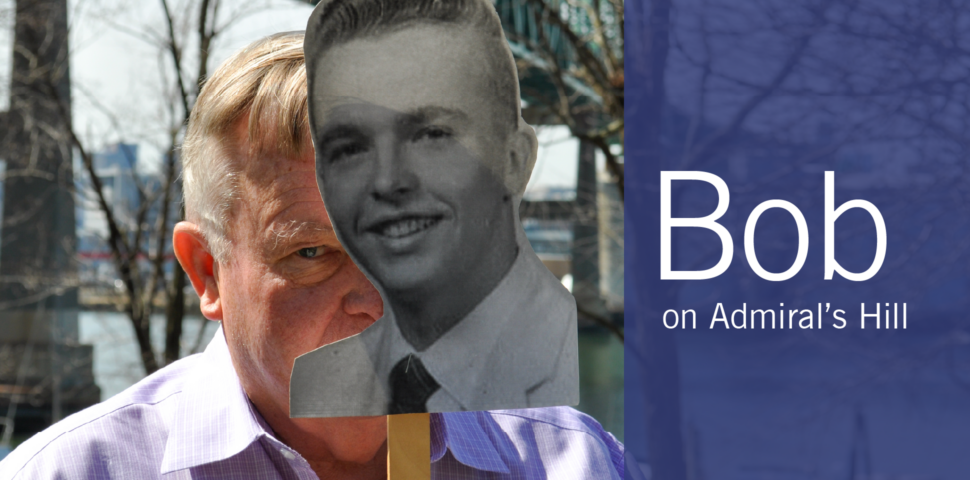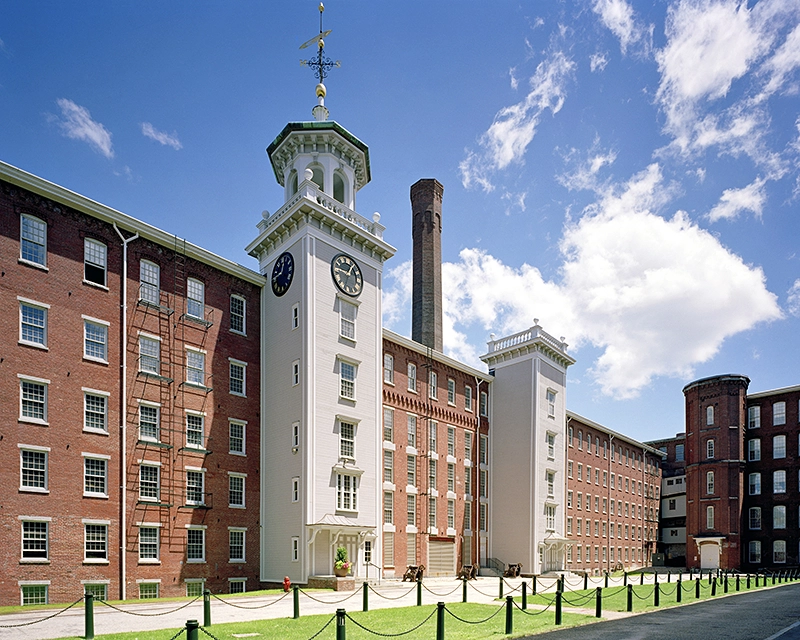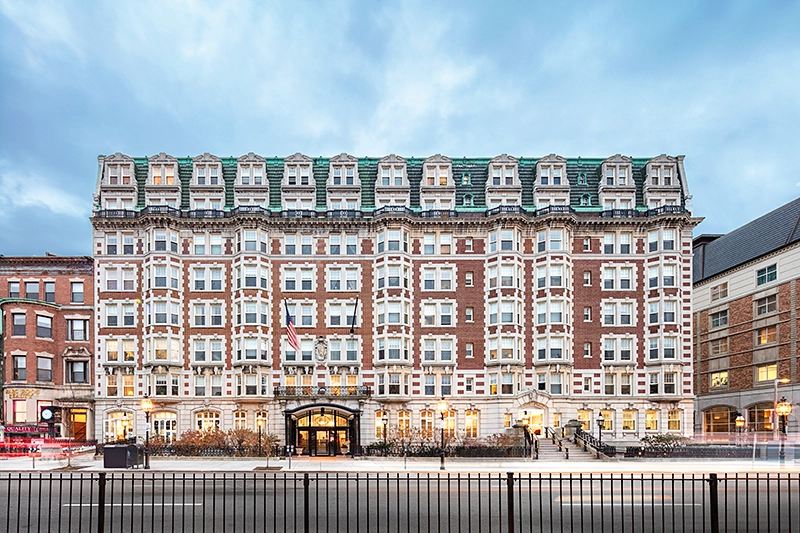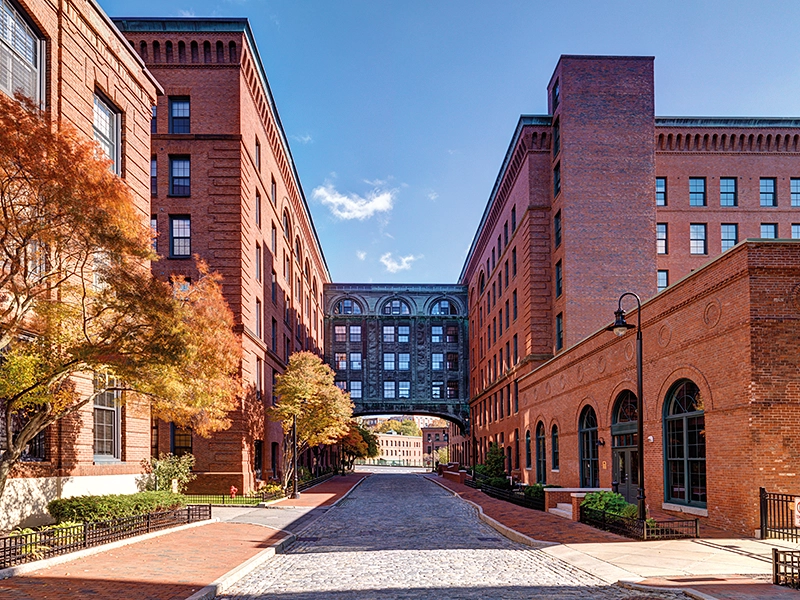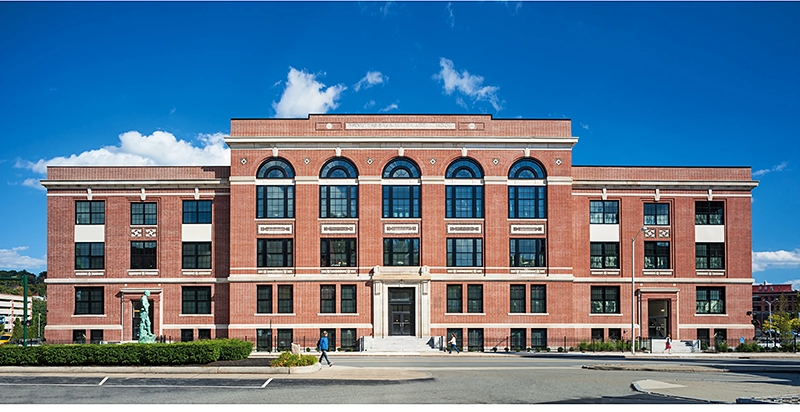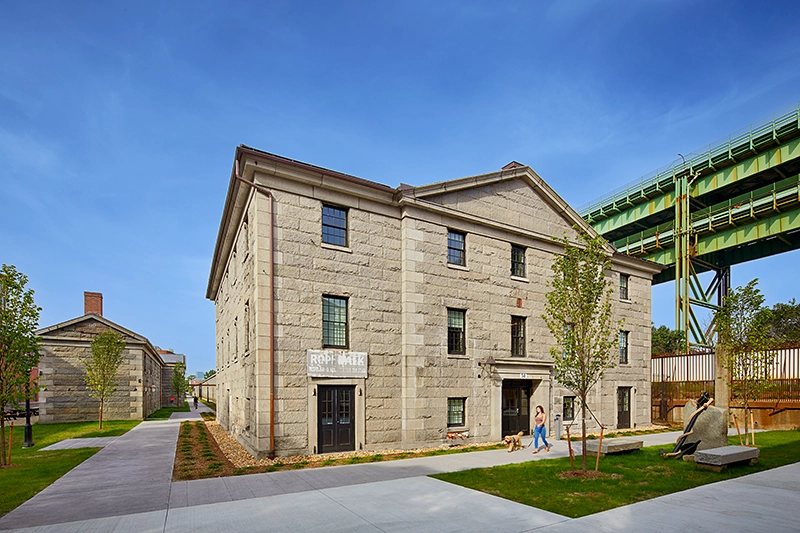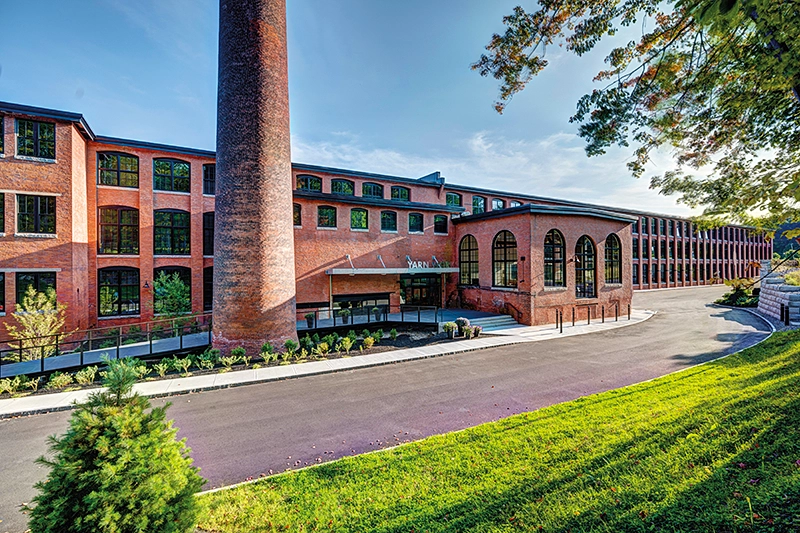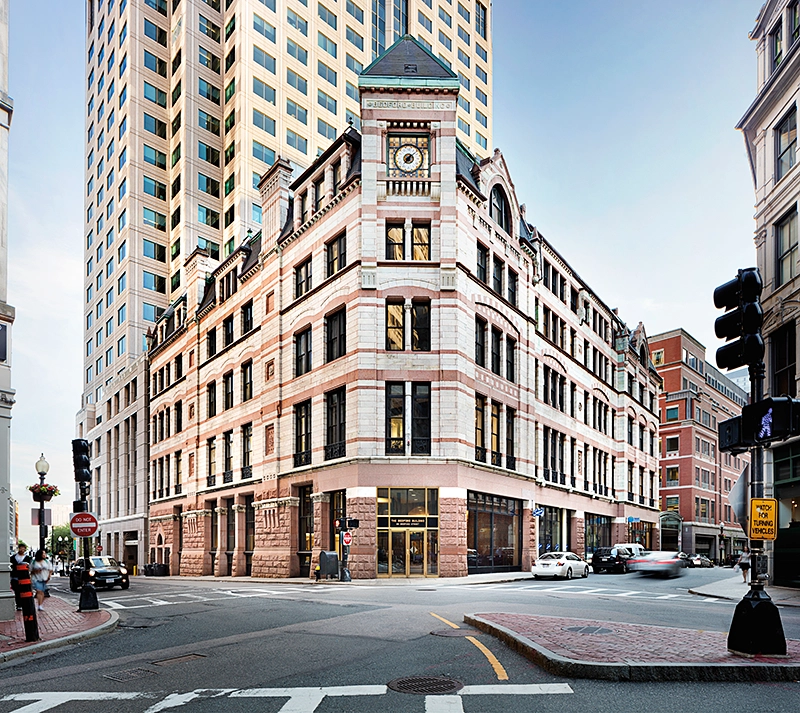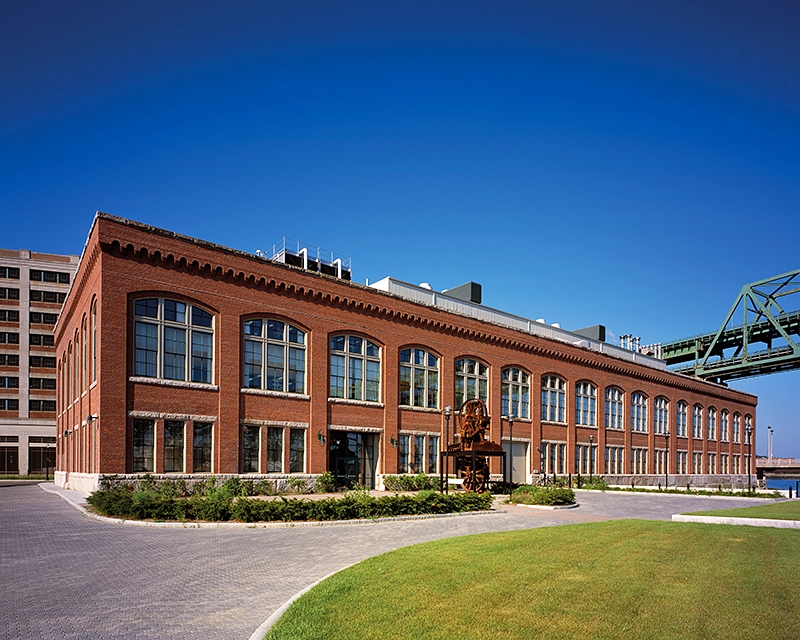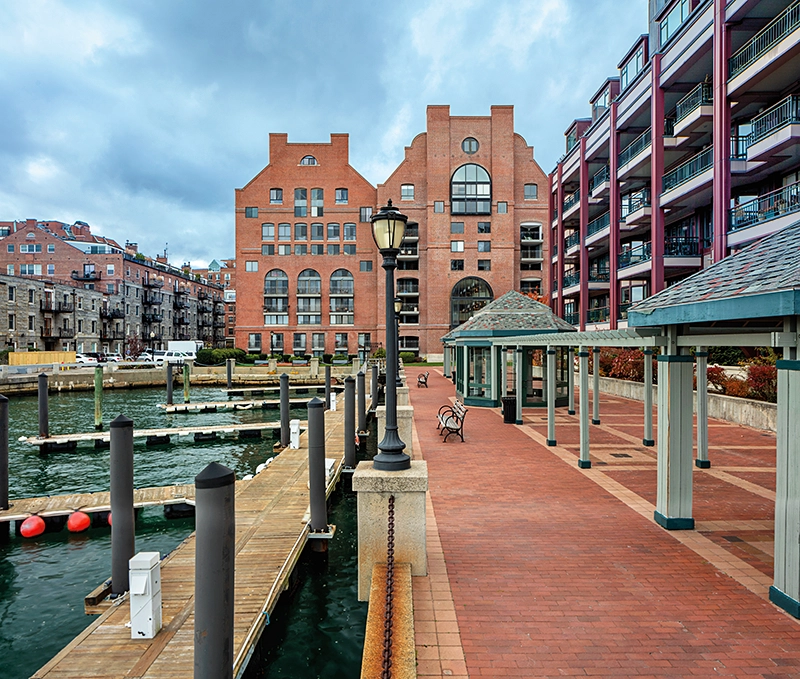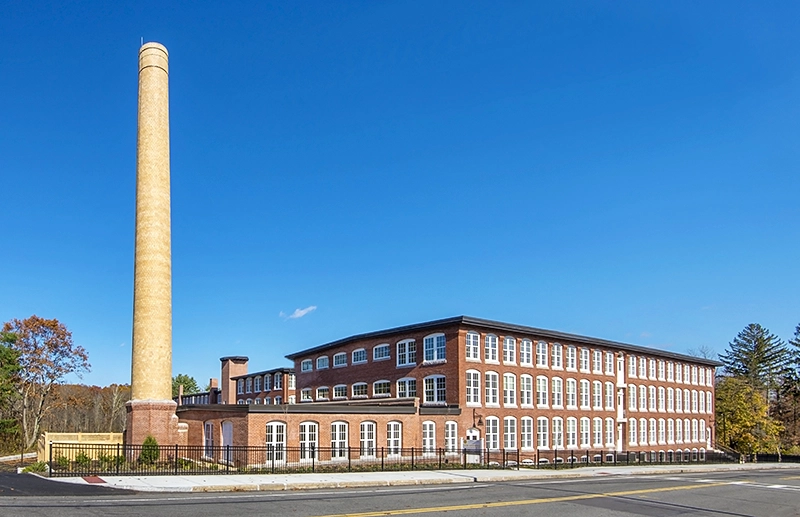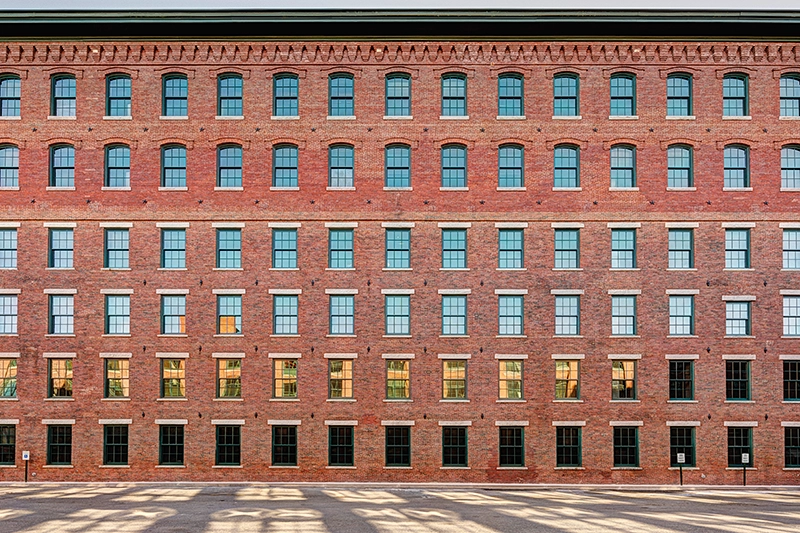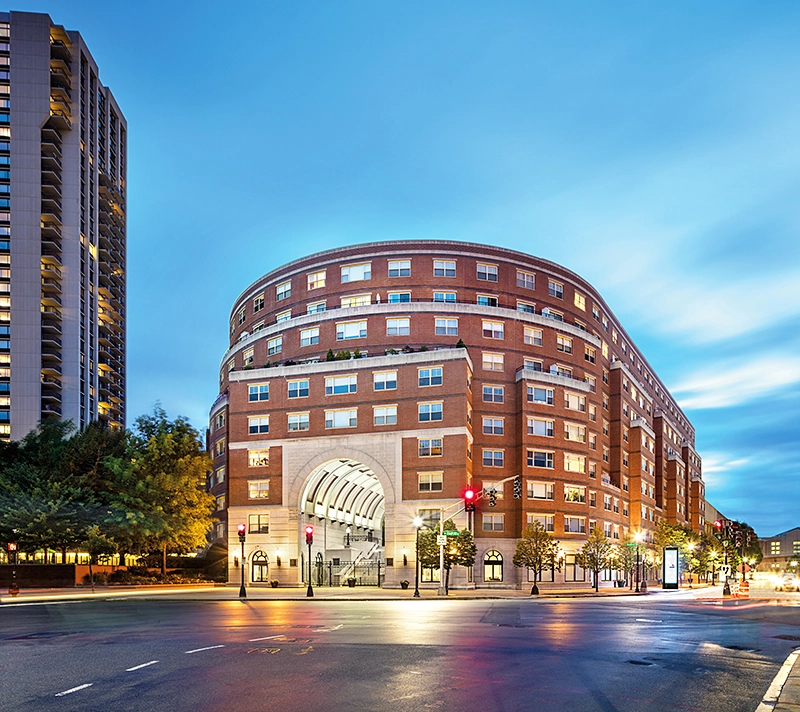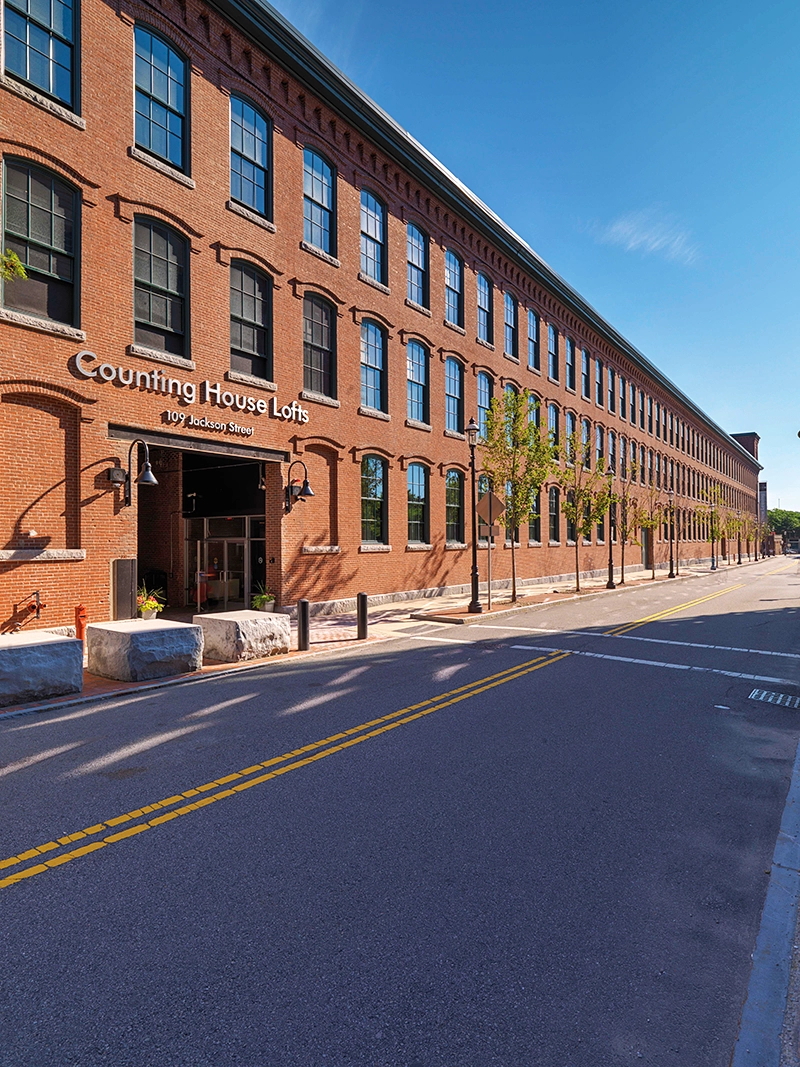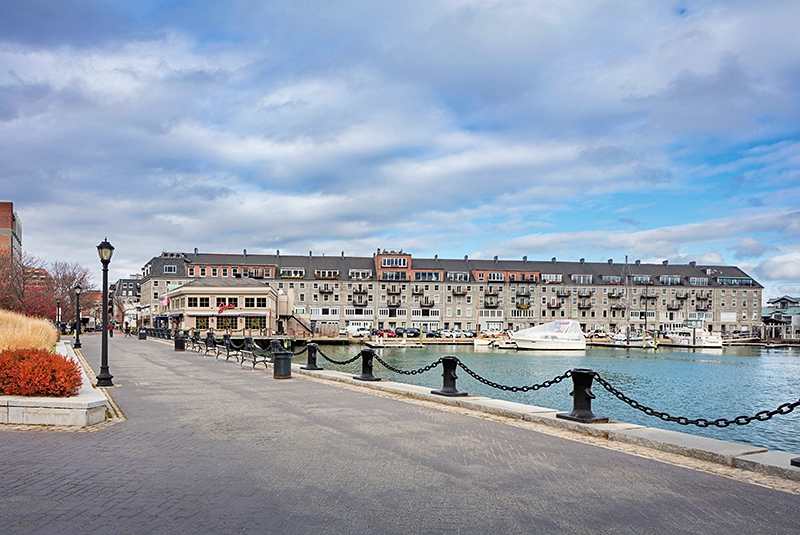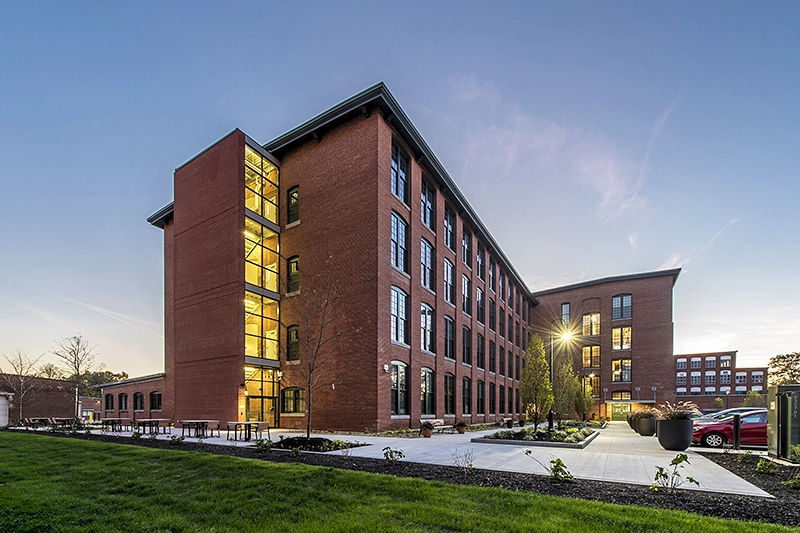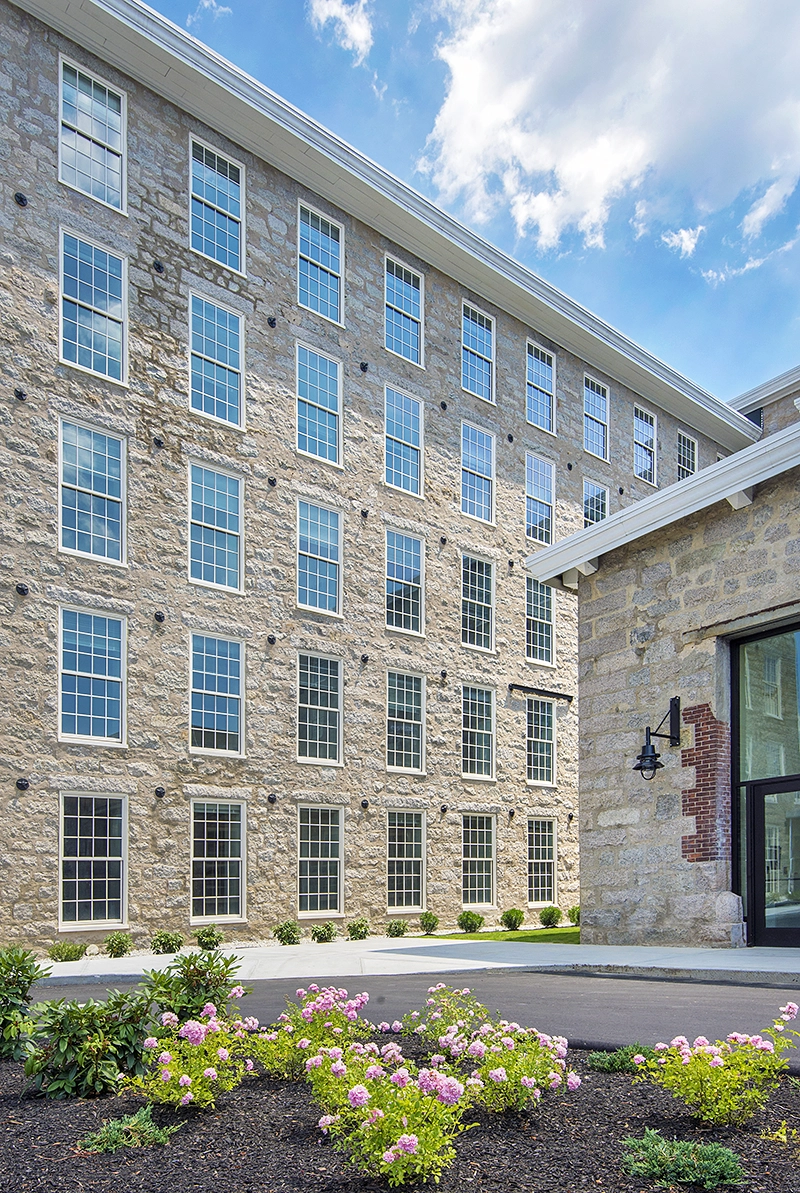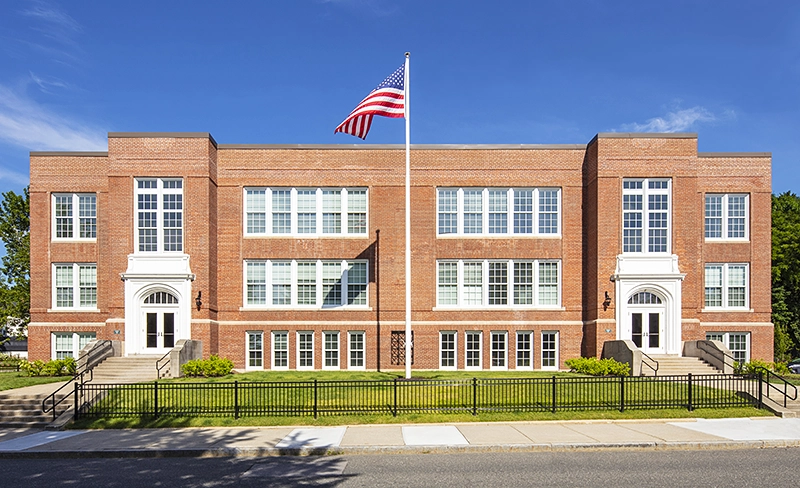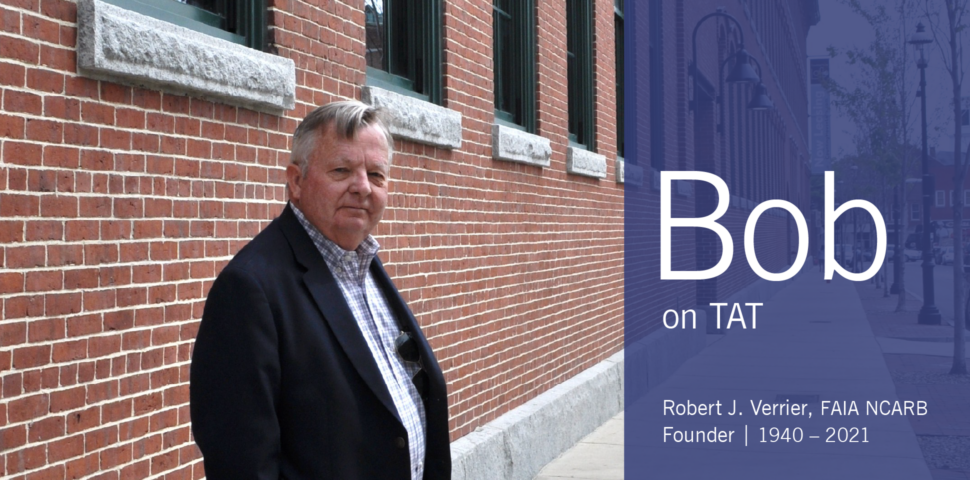
Bob's Story
Legacy
What Endures. Time has given us space to recognize and appreciate how Bob’s legacy endures in the company he founded and shaped. Architect’s legacies are commonly measured in award-winning buildings, and certainly Bob’s can be measured in that way, in the hundreds of historic buildings he saved and repurposed, and the thousands of families who found quality affordable homes in the housing he created. All that is a matter of record, but what also endures is the ethos of the firm he created and loved.
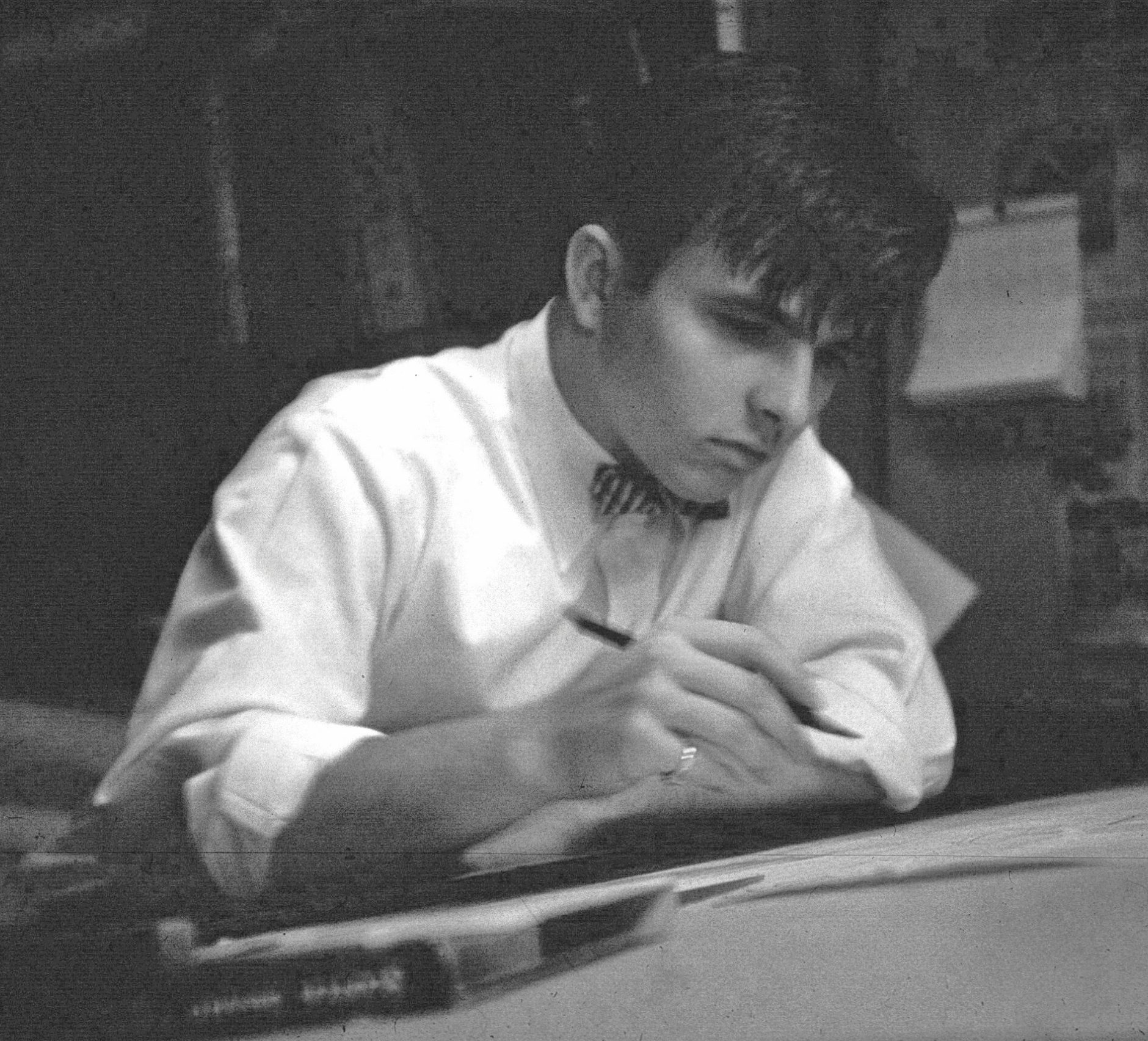
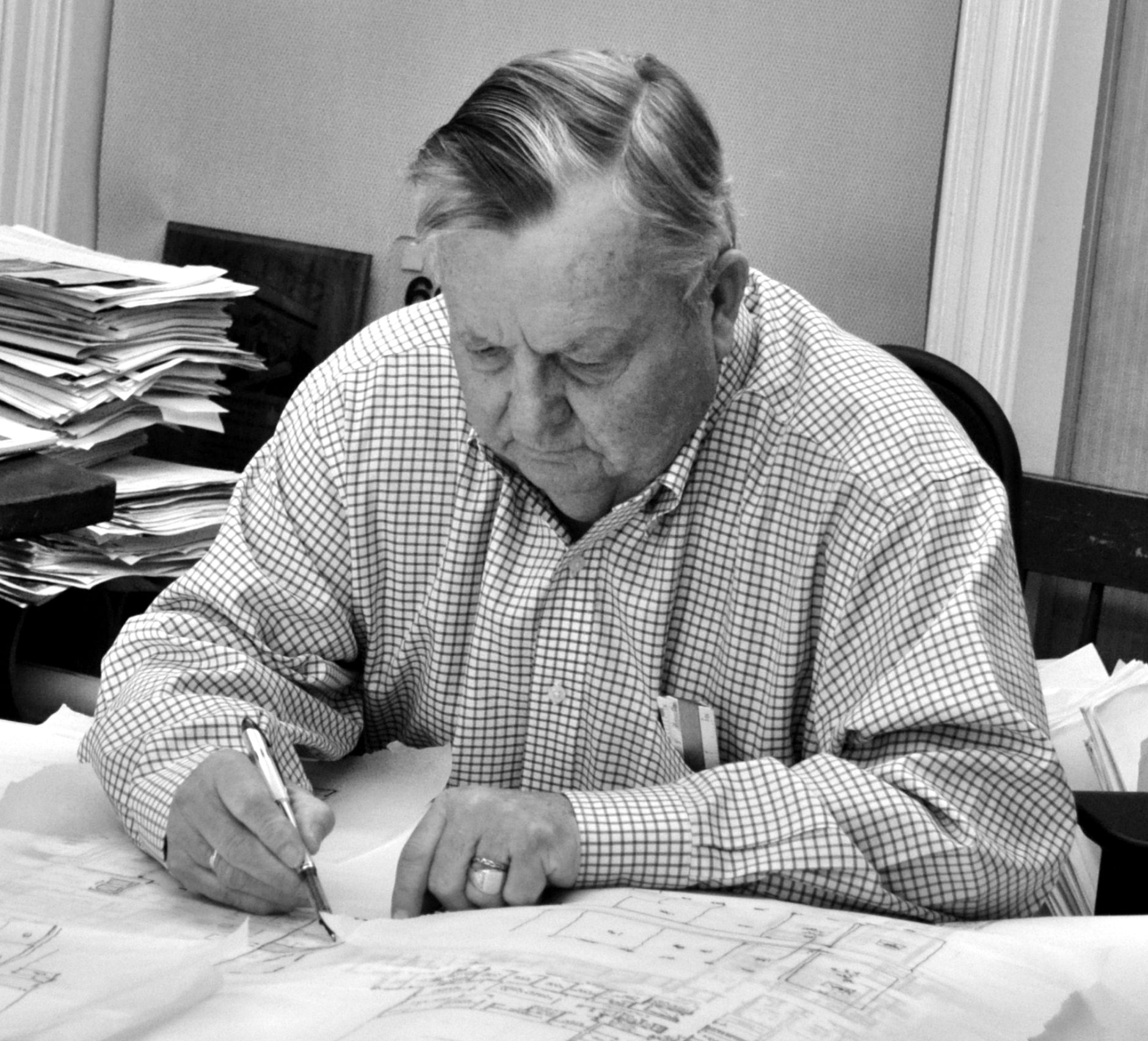
Some of you may never have met him. But you know him in the culture of the company. It is a culture derived from the fierce joy he took in the challenge of getting buildings built, of being able to take the work seriously without taking oneself too seriously, and of seeing the humanity in every person, whether colleagues, clients, contractors, or the communities served. Those of you who never met Bob may think you don’t have a sense of him, but in fact you do. If you’ve ever reflected on the consideration TAT colleagues show one another, of the passion with which they throw themselves into their work, and of the humor they bring to everyday challenges, then you know him. His spirit endures in the firm’s work and how we work with one another.
Michael E. Liu
AIA NCARB | Senior Partner + Design Principal
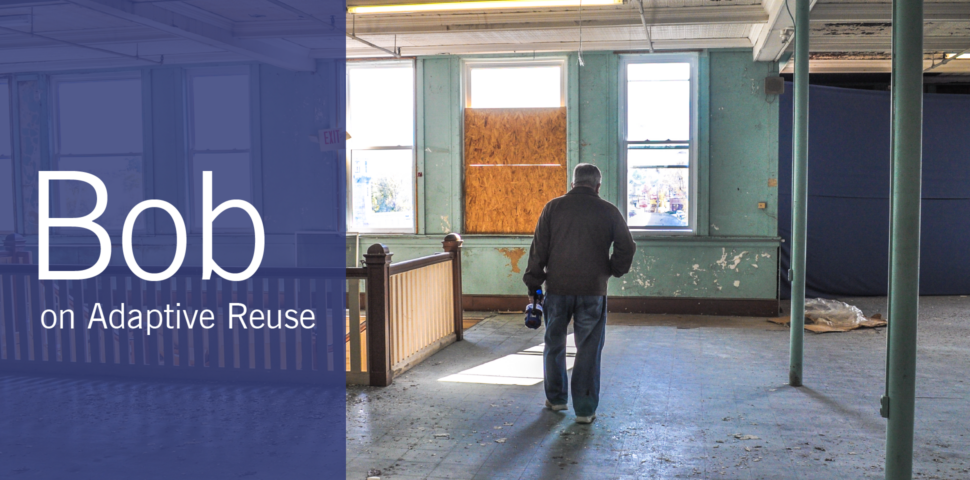
Featured Work
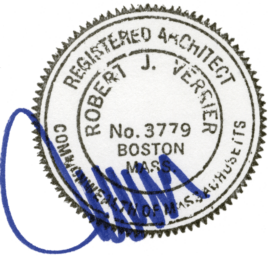
In pursuing his passion for the restoration and reuse of old buildings, Bob was able to combine the social justice mission of creating quality, affordable, and attractive housing for those in need with the preservation of the nation’s architectural legacy. He was unique in his ability to successfully unite both missions in a single prodigious career recognized with over 70 preservation awards producing over 45,000 units of affordable housing in more than 300 adaptive reuse projects. He saw that historic buildings were too valuable to throw away, the need for decent, affordable housing too acute to ignore and he had a natural instinct that preservation was inherently sustainable long before sustainability became a priority goal of architectural design.
Impact | Bob as...
-
Our professional relationship was based on our mutual love of old buildings and our dedication to the social mission of creating homes for people of all income levels. Bob had an unwavering belief in the potential of architecture but most importantly he believed in human potential. I was touched by his warmth, humor and love of life and am privileged to have been able to call Bob my friend.
Lawrence H. Curtis
President + Managing Partner
WinnDevelopment
Friend
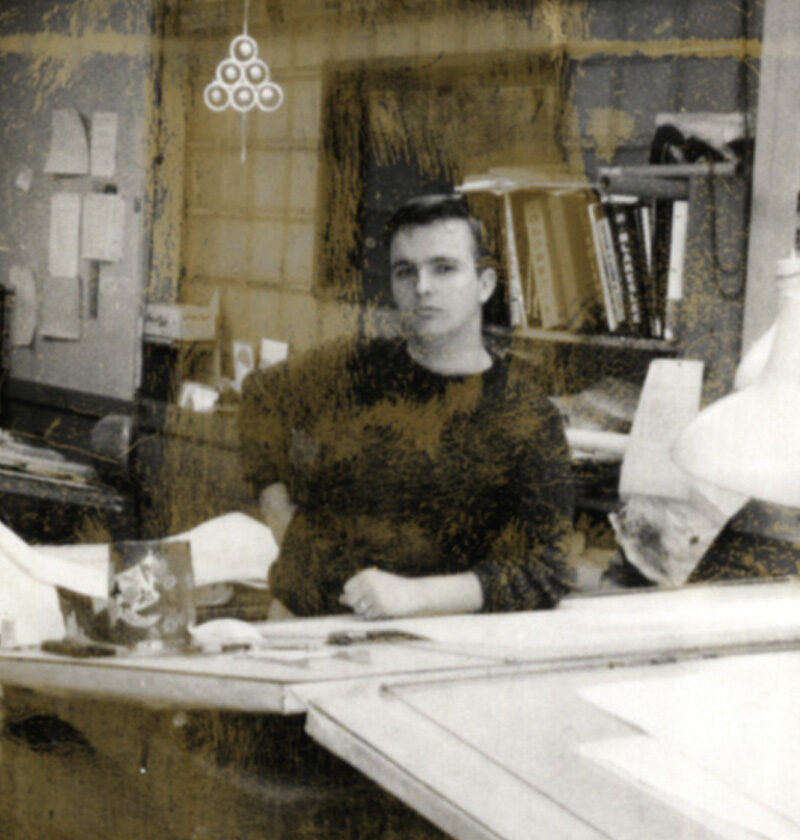
-
Bob led TAT with a robust set of skills, but his superpower was his sense of humor. His joy and laughter were contagious and key to the creative and collaborative office culture that he built. He knew our best ideas often came when we were laughing and goofing around. We regularly have the pressure and stress that comes with turning out great work under tight deadlines, but Bob reminded us to keep things in perspective and enjoy the ride.
Edward R. Bradford, AIA, NCARB, LEED AP
Principal
The Architectural Team
ARCHITECT
Bob was a good friend, who gave testimony to the power of moral character. His courage and decency were unassailable, his loyalty unimpeachable, his generosity enormous. Your status in life meant little to Bob, whether you were a millionaire developer, or a waitress. If you were self-important, Bob was happy to take you down a notch; if you were insecure, he’d be the first to let you know how special you were. Bob had an unwavering moral compass. He was honest, compassionate, and kind. He was authentic, brave and the most selfless person I know. He taught me a lot about design, but much more about life, love, and joy.
Lisa Alberghini
Executive Vice President
Housing Partnership Network
FRIEND
I am convinced that when the time comes, he will be arguing at the gates for one more time around. The best gift he ever gave me, besides our Lita, Maria, and Carlos, is that he allowed me to be me. He has always encouraged me to be independent, and to follow my own dreams.
Carmen R. Verrier
HUSBAND
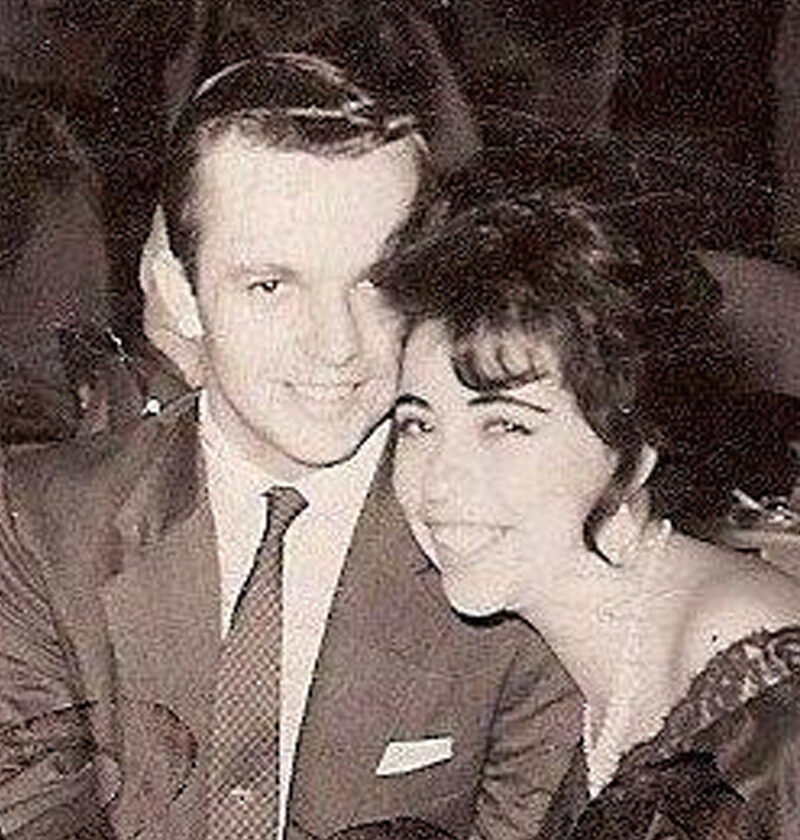
I’m always aware of the smile on my face and the happiness in my heart after seeing Bob.
Jim Dunn
Executive Vice President
Boston Architectural College
COLLEAGUE
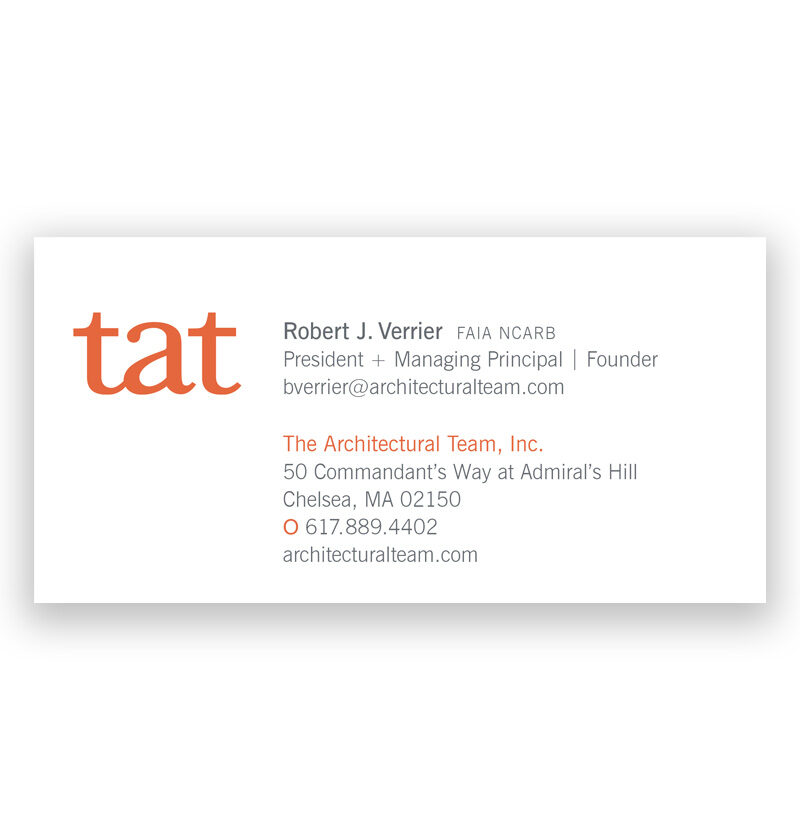
I have seen Bob in action many times over the years. If he saw a bad situation, he volunteered a way to help make it better—one that creatively stretched things a bit, took some risks, but resulted in making something good happen. It seems to me that Bob lives for moments like this. When he can get involved and make a positive difference in someone’s life. He seeks no gain, eschews any credit, he simply seems to delight in being able to help others.
Bruce White, AIA
MENTOR
Bob, as folks put it today, was my “bestie” in the 1950’s and early 60’s. As I became his partner in crime, so to speak, we had many experiences that really helped me deal with much of what life would bring my way. Bob, even as a teenager, was always looking for a new adventure, which is probably no surprise to those of you who were close to him, as he became a wonderful family man and a very skillful architect. The older Bob really wasn’t too different from the younger model. Having the nerve to risk failure and to do things his way have always been Bob’s hallmarks. His failures have been few and doing things his way has been amazingly successful. “Life Is Worth Living” is the motto of Bob Verrier’s life.
Bob Houde
FRIEND
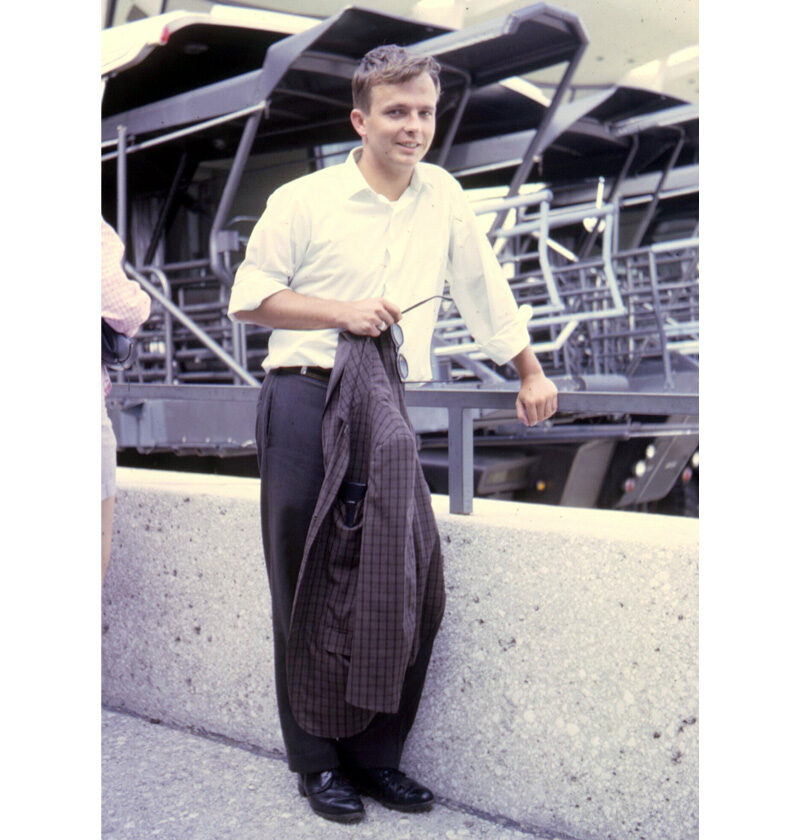
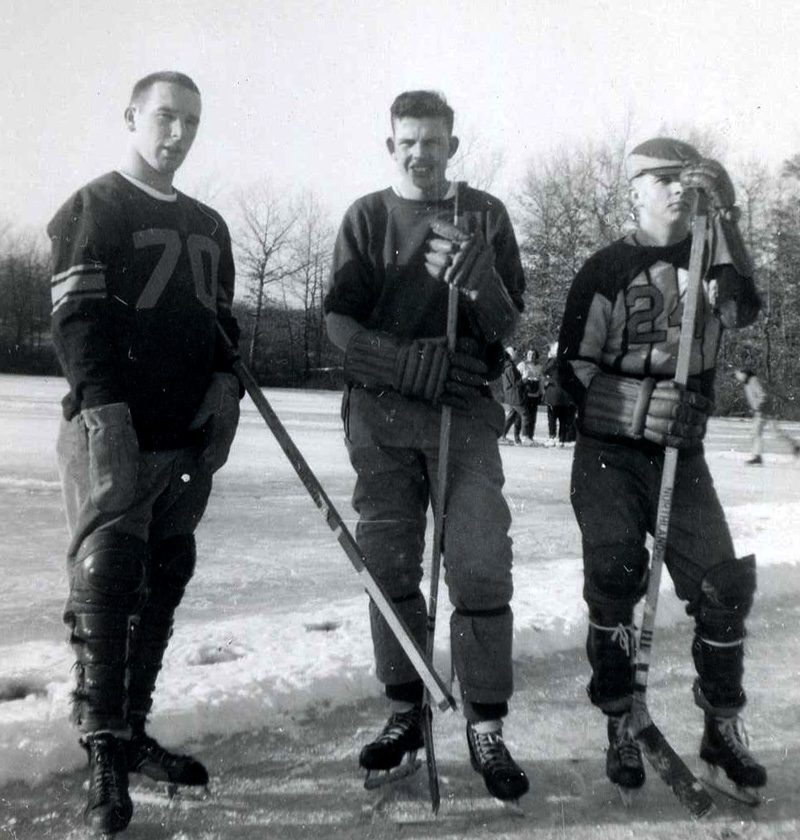
Bob as a mentor was key for not only my professional growth as an employee getting things done the right way but also was a great example of how to lead. Even when dealing with the stickiest of situations, where many would immediately jump into “what went wrong” or “how did we get ourselves in this position” Bob was always quick to start a conversation with something like “How is your son doing?” or “Is your family doing well?”. Then the rest of the conversation was had with a background of compassion and empathy. I try to remember this when leading teams and individuals.
Andrew N. Stebbins, LEED AP
Associate
The Architectural Team
MENTOR
Bob as a father was supportive and nurturing, he also emphasized hard work and taking responsibility for your actions. He was always present, and exposed all of us to art, culture, travel, different ways of life and the infinite possibilities of our futures.
Lita M. Verrier
FATHER
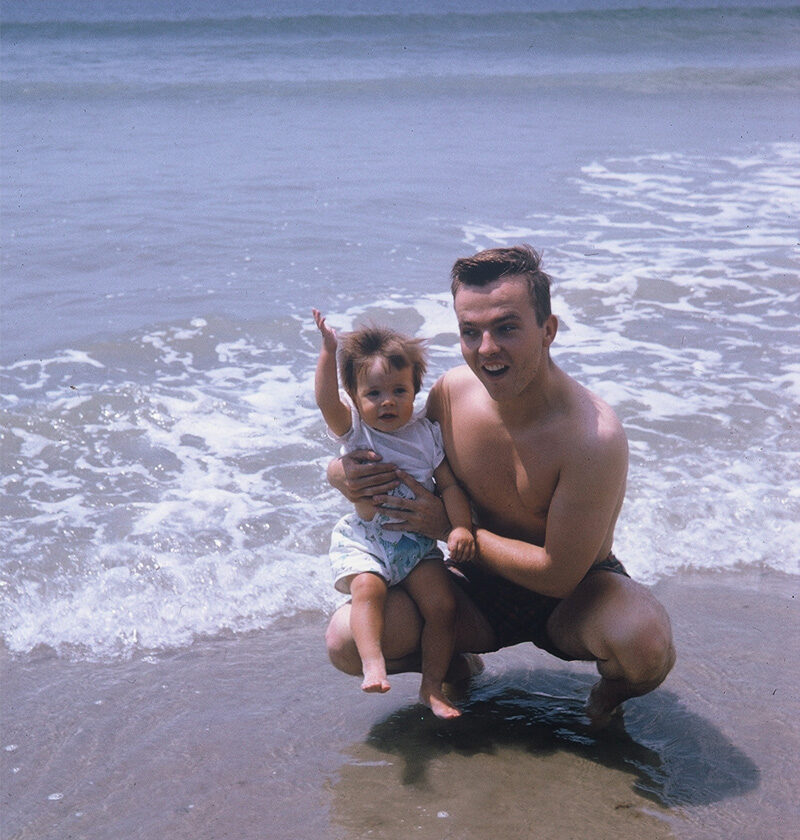
When I first met Bob Verrier, I didn’t know the first thing about architecture. Over the years I had the pleasure of knowing him, he shared his passion for his work with me, one story at a time. That passion was infectious. He opened my eyes to the remarkable world of historic adaptive reuse and the built environment. He taught me to understand the importance of a sense of place and the responsibility of designers to respect and enhance the communities in which they work. Bob gave me a priceless gift—a love for architecture.
Kelly Margeson
Director of Marketing
The Architectural Team
COLLEAGUE
There are so many things we love about Bob. One is his generous nature. If you need it, Bob will give you the shirt off his back. He’ll also give you his pants, Carmen’s shoes, and the garments of anyone unfortunate enough to be standing nearby.
Ron + Myrna Bocage
FRIEND
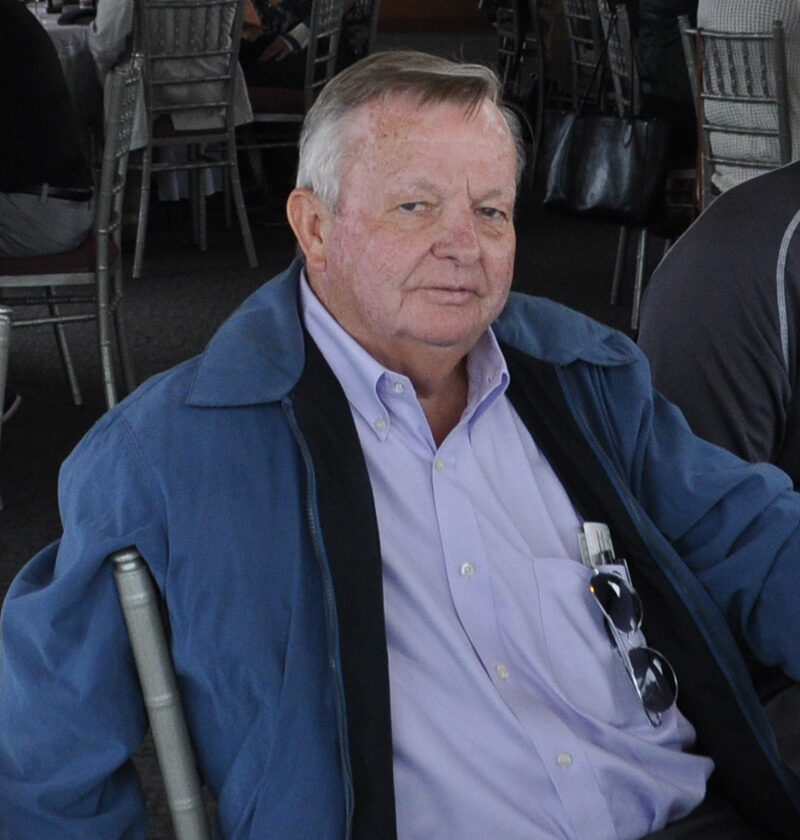
I often think about how important Bob was to my life and what a wonderful, enjoyable person he was. Being with him was always a pleasure and very stimulating. His zest for life, people, and ideas was infectious. He was one of the most generous people that walked the earth.
John K. Freeman
President
Chesapeake Management Group
ARCHITECT
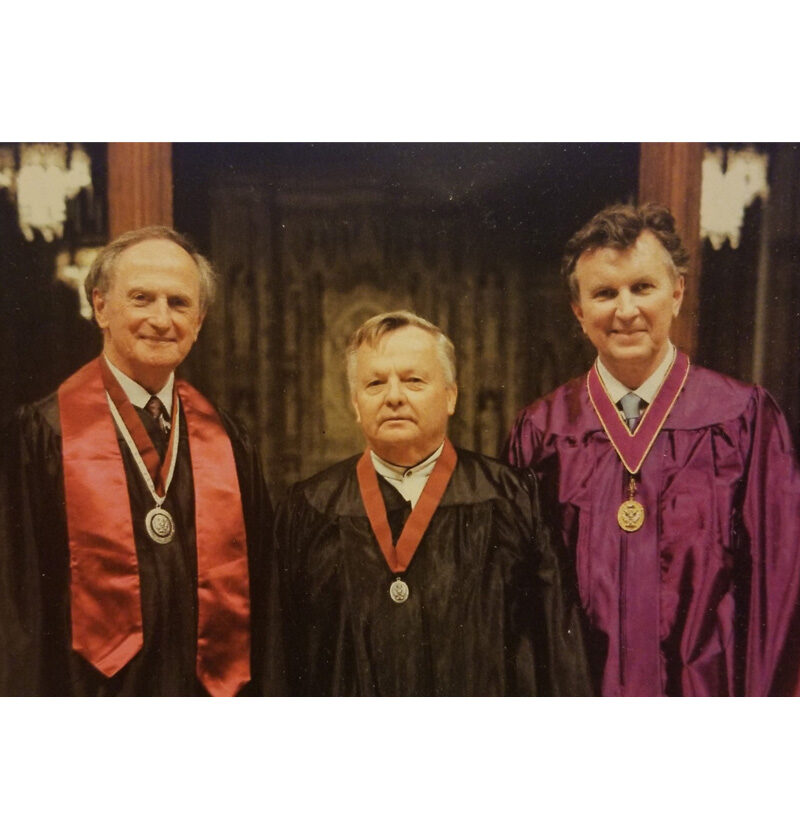
My best memories of you are when we are on the beach flying kites when I was young and trying to get them flying when there was no wind at all! You are the best Tito anyone could ask for, thank you.
Tobin Hart
GRANDFATHER
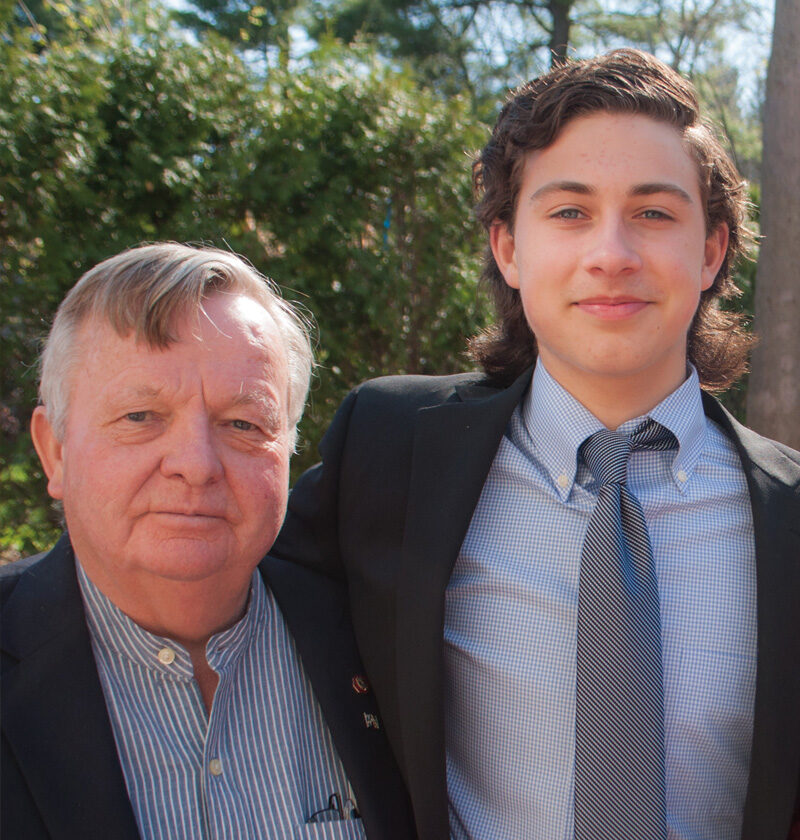
Bob as a mentor made me love old buildings! I had a passion for all architecture, but I didn’t know my specific professional purpose until he catapulted me into the world of adaptive reuse and a newfound love for restoring our old, forgotten buildings. He instilled in me the important connections these buildings have to the past, how they once were the anchors of their communities, and how they should be preserved and celebrated rather than torn down for new construction without roots. My hope is that I can help usher the next generation architects as he did with me and continue his legacy at TAT.
Scott E. Maenpaa
Project Manager
The Architectural Team
MENTOR
Bob, our family friend as well as my mentor, was extremely thoughtful, understanding, and very caring. He always encouraged me to look ahead and take the next step forward, both, in life and in work—such a positive influence and a guiding light! His warm and friendly nature led him to connect with my family instantly, while making us a part of his family too. He will always hold a very special place in our hearts.
Rimona Prabhu
Founder + Principal
CadAid
FRIEND
Bob is an icon in the community and certainly to me and my family. He is a fierce competitor, an amazing friend and simply tenacious. I went into business during a very difficult time in the real estate market and Bob was among a very few loud voices that resonated with confidence, friendship, and support. His gesture of friendship bound me to him in ways that I never imagined.
Mark S. Schuster
Chief Executive Officer
Wingate Companies
ARCHITECT
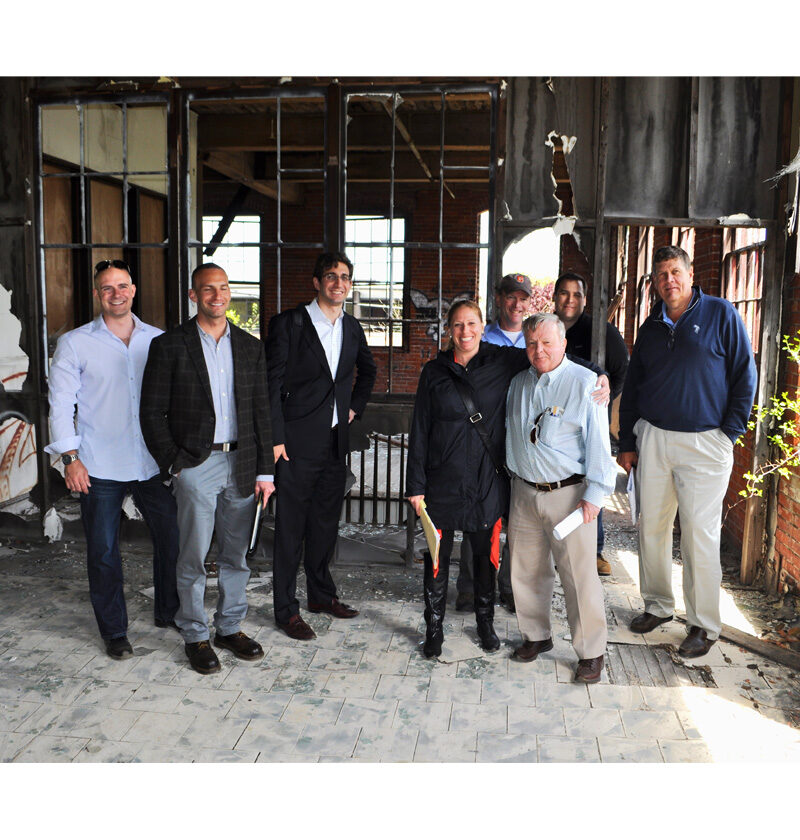
Tito is short for “abuelito” which means grandfather in Spanish. He has gray hair, with some bangs that hang down in front like Elvis! I love my grandfather because he tells great stories. I also like going into the abandoned buildings with him, with a hard hat on.
Kira Moran
GRANDFATHER
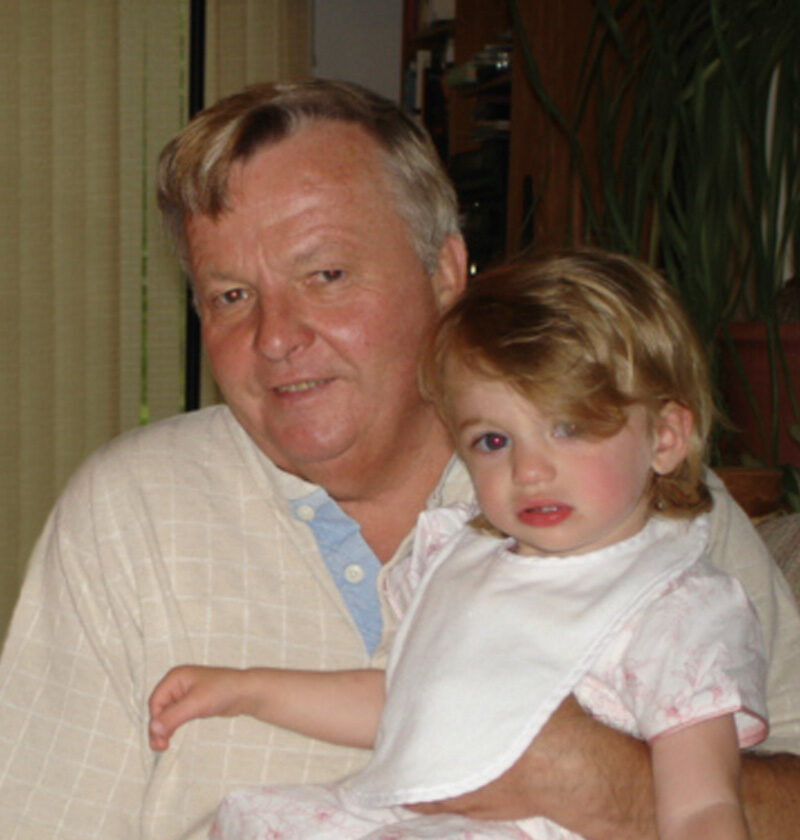
I first met Bob over 30 years ago in New Bedford, in an old, dilapidated trolley station called the Car Barn, which the city was considering condemning. A number of well-established architects had looked at the condition of the building and wanted no part of the project. Bob was the only architect that had the creativity, imagination, and guts to take on such a challenging property transformation—his design and rehab earned national awards for historic preservation and adaptive reuse. His personal style is a unique blend of hard work, integrity, ingenuity, and best of all, and tremendous sense of humor.
Patrick Carney
Chairman + CEO
Claremont Companies
ARCHITECT
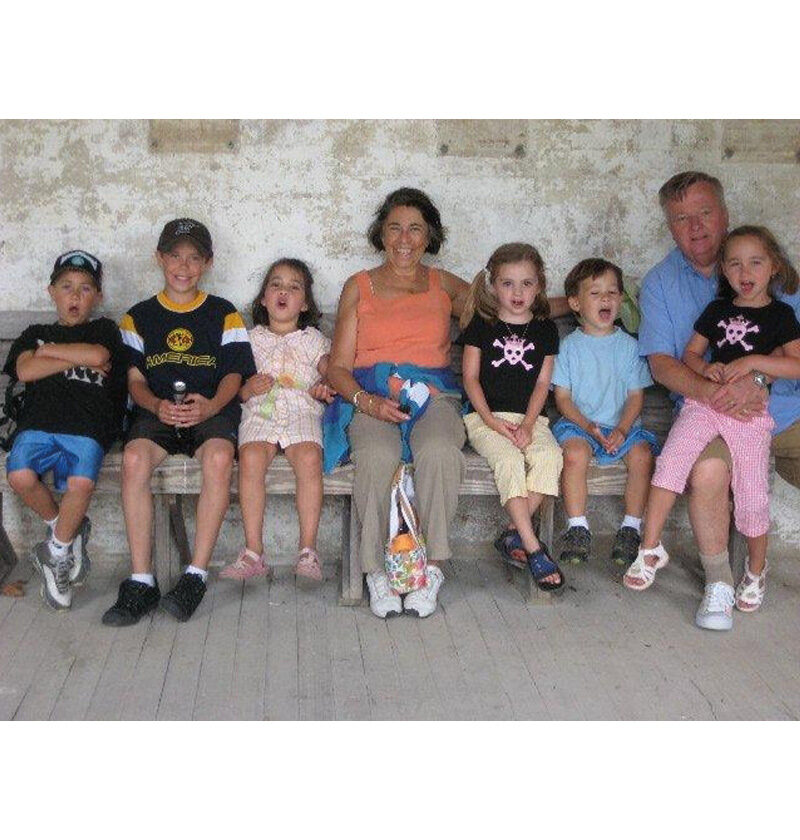
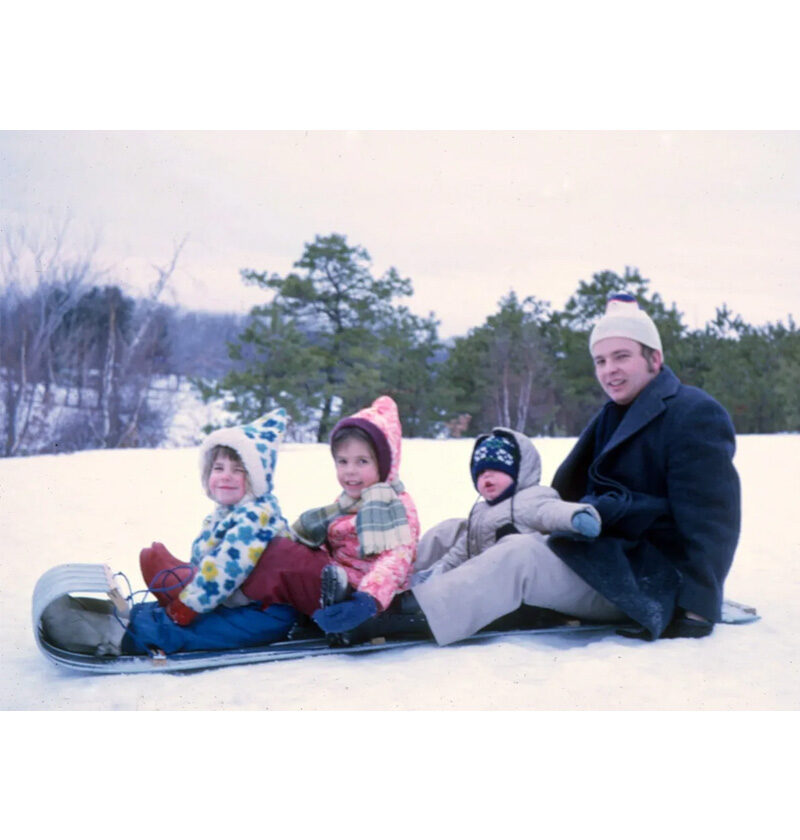
One thing I’ve learned about Bob is that you will never walk out of his house with an empty stomach, empty hands, or an empty heart.
Karina Fassett
FRIEND
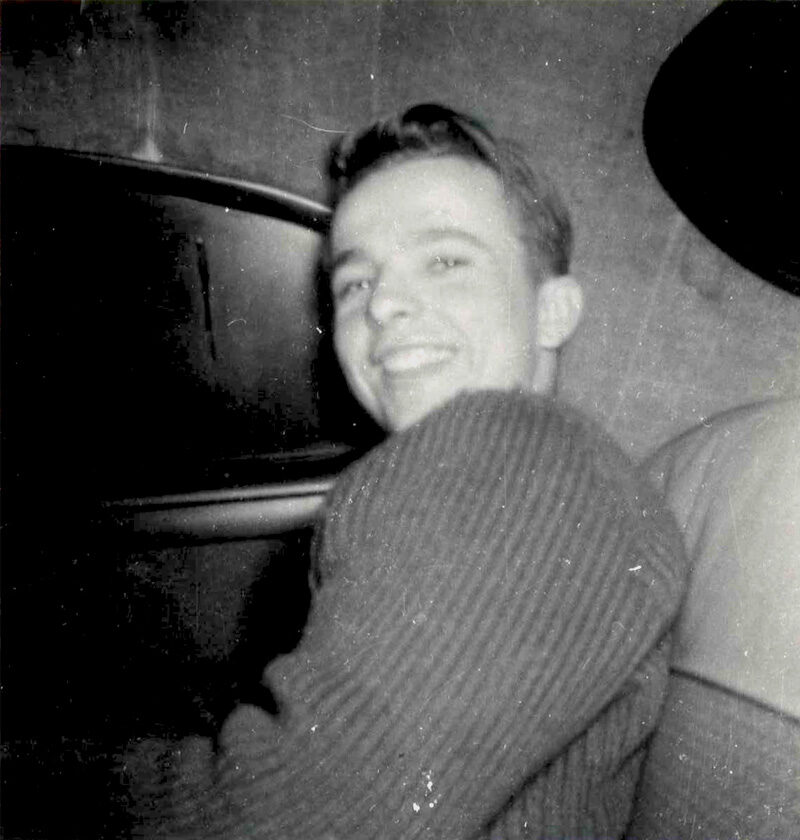
My favorite memories of working with Bob were when we had to inspect buildings scheduled for renovation prior to design commencing. Bob never hesitated to walk through run-down occupied housing, or dilapidated mill buildings that seemed ready to collapse. He was prepared to travel for a client anytime, anywhere. His humble reserved genius is not what I think of when I speak of Bob. It is his straightforward, uncensored, well-meaning viewpoint that I have come to expect and which I admire most.
Mark DiNapoli
ARCHITECT
When I think of Tito Bob, I think of his love for his 6 grandchildren. I think of his generosity towards everyone. I think of his sense of adventure.
Alicia Moran
GRANDFATHER
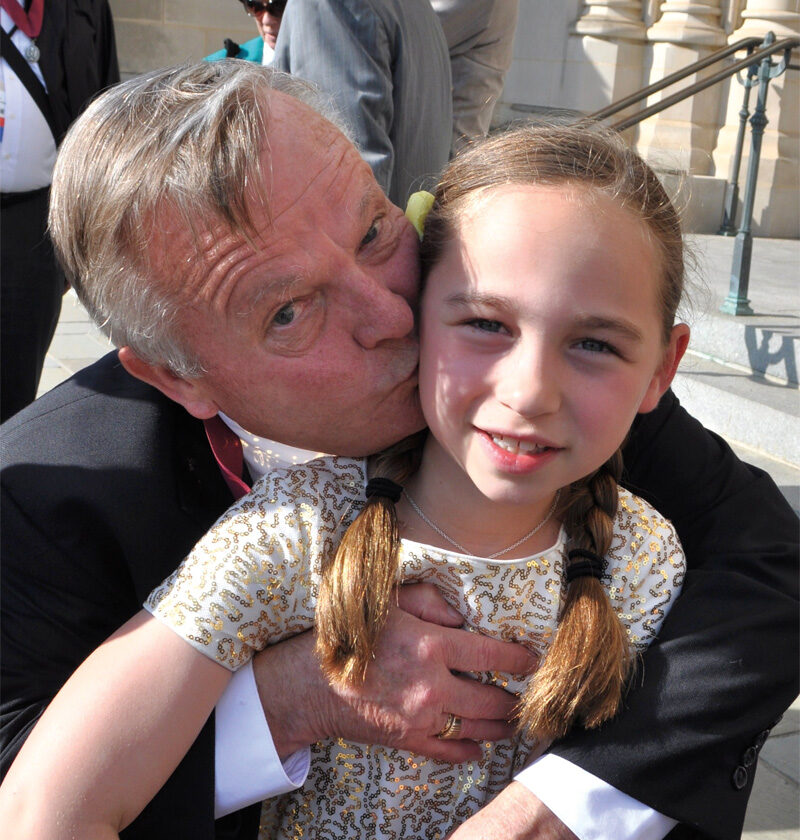
I love to travel. And the adventure that goes along with it. I was in East Berlin when the wall was being built. I barely got out at the Brandenburg Gate. What was I doing in East Berlin? Trading Deutschmarks on the black market.
Bob Verrier
BOB

Claremont completed many innovative rehab projects with Bob during a very interesting time in the early eighties. Tax credits and efforts to revive blighted neighborhoods gave us unusual opportunities to rethink older buildings and their uses. Bob seemed to be way ahead of the rest of us on this and was a wonderful teacher making the work fun and exciting.
Mark Carney
ARCHITECT
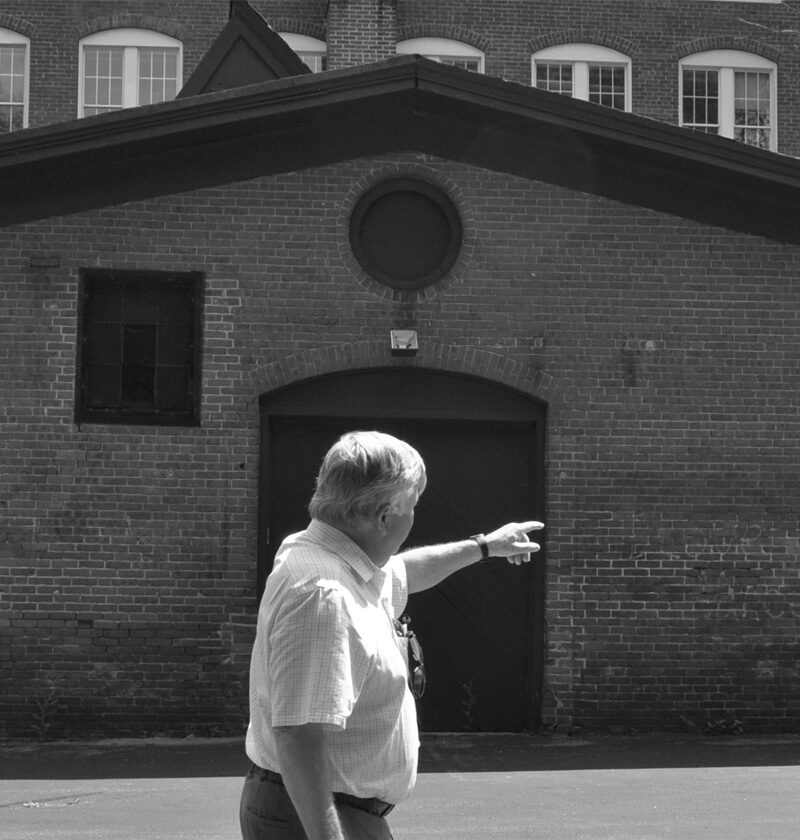
Robert was a friend of mine. I met him at college, and we remained lifelong friends. He was smart, a good listener, always accommodating, and was just fun to be with. Through the years I enjoyed many experiences with Robert. One of my favorites was when we headed to Mexico to visit Carmen’s family. Robert bought a used car for $100 thinking it would get us to Mexico, and back to Boston. This was a good plan, but the car, I hate to say, was not up for the task. It broke down on the Mass turnpike, fifty miles out from Boston. I was heartbroken, but Robert was ready for this challenge. By hook or by crook, and perhaps a little luck, we did make it to Mexico. During the trip, Robert was always up-beat, never discouraged, never complained, and we just kept moving—being creative when necessary and enjoying each other’s company. Needless to say, we made it, and had great fun along the way. No doubt about it, Robert was a special kind of guy.
Rod Burnett, AIA
FRIEND
I have had the good fortune to have known Bob for about 40 years. Over that time, we worked together developing, designing, and building some of the greatest developments in New England. Bob has been gifted with many attributes. He has both imagination and knowledge which is a quality hard to find. He doesn’t believe in telling people what to do, he believes that people will surprise you with their creativity. Bob has a great attitude, patience, and perseverance. The impressive things he has accomplished are the end result of his perception, wisdom, hard work, and the ability to respect his colleagues as much as we all respect him.
Ed Fish
ARCHITECT
I still have a vision of Bob at the lake spiraling off of the dock to the amusement of the adults and to the delight of the children!
Jon McKee
FRIEND

Bob, my mentor and ‘Boston Grandpa’ was a man with perception and foresight, who had the ability to spot my skills and creativity very early on while I was still in school. He always listened to my ideas and pushed me to further develop them, even when I thought I could not. He took the time to celebrate and share every milestone event of mine growing up. He will always be deeply missed.
Rihan Prabhu
3Draw
MENTOR
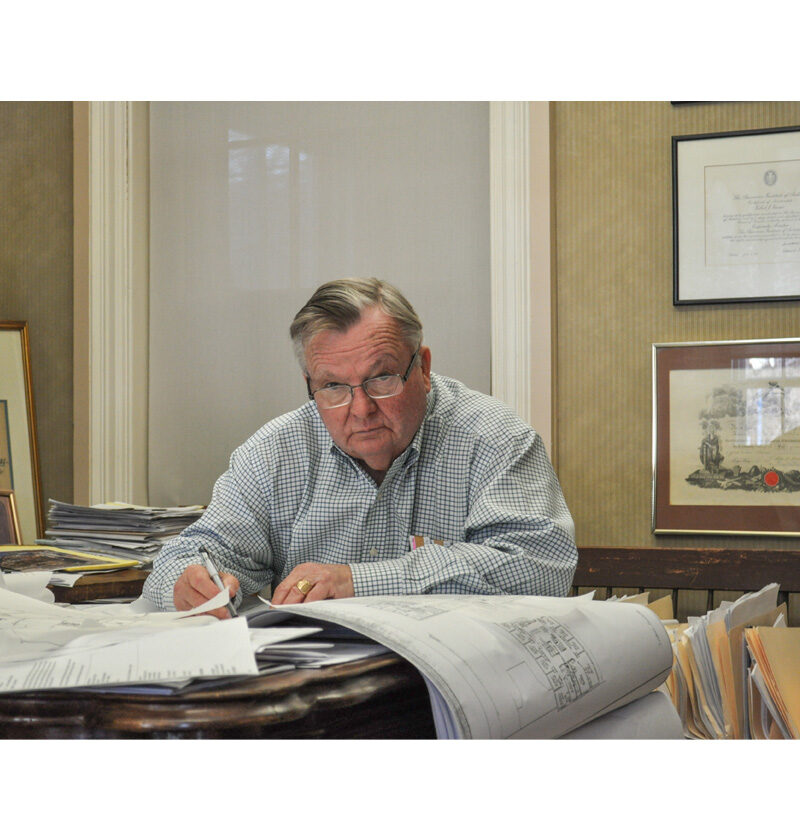
I will always remember Bob as my mentor, my boss, my colleague, but best of all, a loyal friend. He always wanted what was best for me. I could do no wrong in his eyes. I remember when he said to me, “Carlos, buy a house. That’s the best investment you can make. You can borrow from your 401k and pay yourself back with interest. It’s a win, win situation.” That’s exactly what I did, and today, I’m a homeowner. I liked to tell Bob a phrase my mother told me as a child,“Lo que yo digo, se puede escribir.” In English it means, “What I say, can be written down.” Bob was as good as his word; reliable, truthful, sincere with his promises—that was Bob.
Carlos I. Colon
Right-hand to Bob + TAT
The Architectural Team
FRIEND
One of the many things that Bob has taught me is, life as in buildings may have problems, but if you keep a positive attitude and work them through, things usually end up okay.
Donna Sullivan
COLLEAGUE
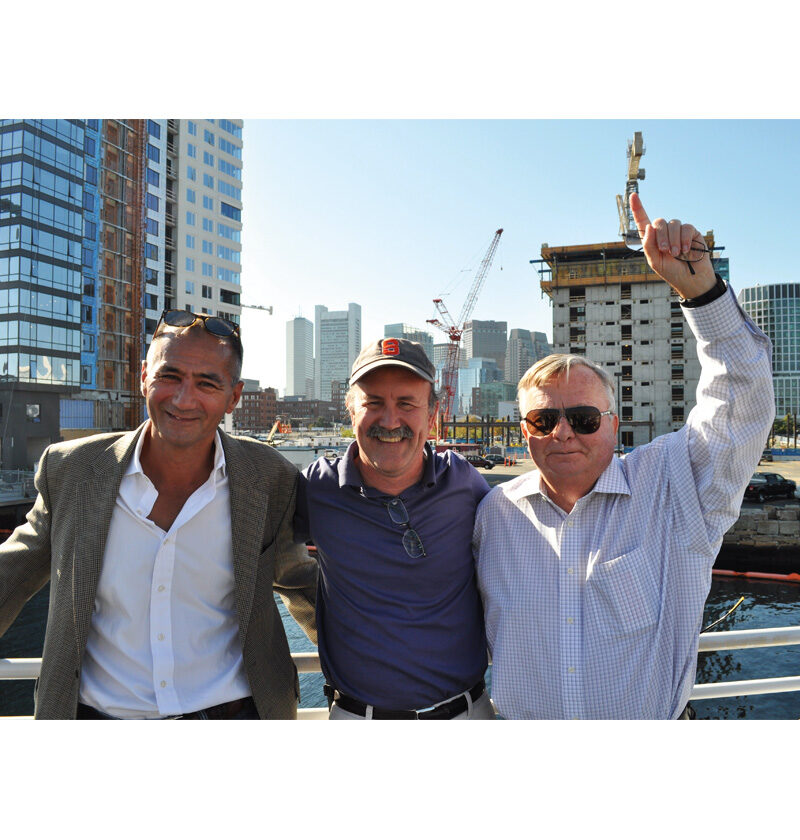
Bob served primarily as my mentor and friend, but really helped me to understand the art of the business. He knew a well-timed joke could cut the stress of the work. He excelled at reading others and the room, and knew that most client relationship problems could be solved by working with people and not against them. Bob helped me to understand the value of our client relationships, and often Bob’s word at a conference table was as good as a signed contract. There was humility and honesty in his interactions with our clients and public boards. If he believed something strongly, he didn’t shy away from making his position known, but also could do so without alienating the other people in the room. His humbleness and his devotion to our profession and firm was staggering. There was never an excuse, not to give it your all. He set a high bar for all of us, he taught me that humility, honesty, and loyalty are the cornerstones to successful client relationships, and a prosperous business.
Anthony Vivirito, Associate AIA, LEED AP
Associate
The Architectural Team
MENTOR
Bob as a mentor was compassionate and inspiring. He had the biggest heart of anyone I’ve ever met. If he knew someone was going through a difficult time, he always asked what he could do to help, and delivered when he received an answer. He taught me to never take myself, or others, too seriously and to find joy and laughter in every moment. That was easy to do when he was around. I miss him.
Danielle Eckrich, CAP OM TA
Office Manager
The Architectural Team
MENTOR
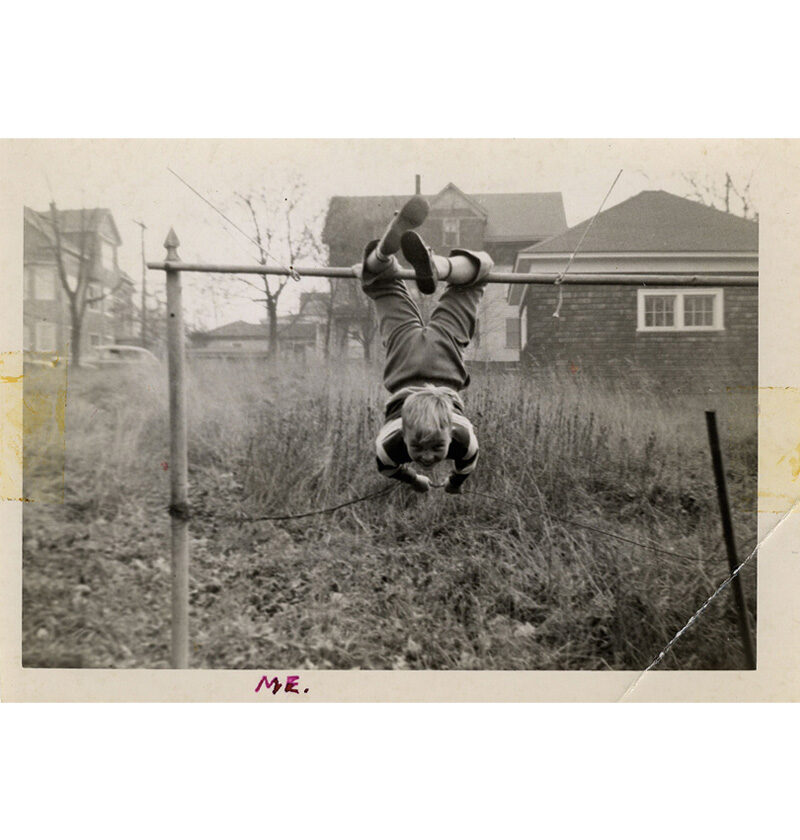
-
Our professional relationship was based on our mutual love of old buildings and our dedication to the social mission of creating homes for people of all income levels. Bob had an unwavering belief in the potential of architecture but most importantly he believed in human potential. I was touched by his warmth, humor and love of life and am privileged to have been able to call Bob my friend.
Lawrence H. Curtis
President + Managing Partner
WinnDevelopment
Friend
-

-
Bob led TAT with a robust set of skills, but his superpower was his sense of humor. His joy and laughter were contagious and key to the creative and collaborative office culture that he built. He knew our best ideas often came when we were laughing and goofing around. We regularly have the pressure and stress that comes with turning out great work under tight deadlines, but Bob reminded us to keep things in perspective and enjoy the ride.
Edward R. Bradford, AIA, NCARB, LEED AP
Principal
The Architectural Team
ARCHITECT
Bob was a good friend, who gave testimony to the power of moral character. His courage and decency were unassailable, his loyalty unimpeachable, his generosity enormous. Your status in life meant little to Bob, whether you were a millionaire developer, or a waitress. If you were self-important, Bob was happy to take you down a notch; if you were insecure, he’d be the first to let you know how special you were. Bob had an unwavering moral compass. He was honest, compassionate, and kind. He was authentic, brave and the most selfless person I know. He taught me a lot about design, but much more about life, love, and joy.
Lisa Alberghini
Executive Vice President
Housing Partnership Network
FRIEND
I am convinced that when the time comes, he will be arguing at the gates for one more time around. The best gift he ever gave me, besides our Lita, Maria, and Carlos, is that he allowed me to be me. He has always encouraged me to be independent, and to follow my own dreams.
Carmen R. Verrier
HUSBAND

I’m always aware of the smile on my face and the happiness in my heart after seeing Bob.
Jim Dunn
Executive Vice President
Boston Architectural College
COLLEAGUE

I have seen Bob in action many times over the years. If he saw a bad situation, he volunteered a way to help make it better—one that creatively stretched things a bit, took some risks, but resulted in making something good happen. It seems to me that Bob lives for moments like this. When he can get involved and make a positive difference in someone’s life. He seeks no gain, eschews any credit, he simply seems to delight in being able to help others.
Bruce White, AIA
MENTOR
Bob, as folks put it today, was my “bestie” in the 1950’s and early 60’s. As I became his partner in crime, so to speak, we had many experiences that really helped me deal with much of what life would bring my way. Bob, even as a teenager, was always looking for a new adventure, which is probably no surprise to those of you who were close to him, as he became a wonderful family man and a very skillful architect. The older Bob really wasn’t too different from the younger model. Having the nerve to risk failure and to do things his way have always been Bob’s hallmarks. His failures have been few and doing things his way has been amazingly successful. “Life Is Worth Living” is the motto of Bob Verrier’s life.
Bob Houde
FRIEND


Bob as a mentor was key for not only my professional growth as an employee getting things done the right way but also was a great example of how to lead. Even when dealing with the stickiest of situations, where many would immediately jump into “what went wrong” or “how did we get ourselves in this position” Bob was always quick to start a conversation with something like “How is your son doing?” or “Is your family doing well?”. Then the rest of the conversation was had with a background of compassion and empathy. I try to remember this when leading teams and individuals.
Andrew N. Stebbins, LEED AP
Associate
The Architectural Team
MENTOR
Bob as a father was supportive and nurturing, he also emphasized hard work and taking responsibility for your actions. He was always present, and exposed all of us to art, culture, travel, different ways of life and the infinite possibilities of our futures.
Lita M. Verrier
FATHER

When I first met Bob Verrier, I didn’t know the first thing about architecture. Over the years I had the pleasure of knowing him, he shared his passion for his work with me, one story at a time. That passion was infectious. He opened my eyes to the remarkable world of historic adaptive reuse and the built environment. He taught me to understand the importance of a sense of place and the responsibility of designers to respect and enhance the communities in which they work. Bob gave me a priceless gift—a love for architecture.
Kelly Margeson
Director of Marketing
The Architectural Team
COLLEAGUE

There are so many things we love about Bob. One is his generous nature. If you need it, Bob will give you the shirt off his back. He’ll also give you his pants, Carmen’s shoes, and the garments of anyone unfortunate enough to be standing nearby.
Ron + Myrna Bocage
FRIEND
I often think about how important Bob was to my life and what a wonderful, enjoyable person he was. Being with him was always a pleasure and very stimulating. His zest for life, people, and ideas was infectious. He was one of the most generous people that walked the earth.
John K. Freeman
President
Chesapeake Management Group
ARCHITECT

My best memories of you are when we are on the beach flying kites when I was young and trying to get them flying when there was no wind at all! You are the best Tito anyone could ask for, thank you.
Tobin Hart
GRANDFATHER

Bob as a mentor made me love old buildings! I had a passion for all architecture, but I didn’t know my specific professional purpose until he catapulted me into the world of adaptive reuse and a newfound love for restoring our old, forgotten buildings. He instilled in me the important connections these buildings have to the past, how they once were the anchors of their communities, and how they should be preserved and celebrated rather than torn down for new construction without roots. My hope is that I can help usher the next generation architects as he did with me and continue his legacy at TAT.
Scott E. Maenpaa
Project Manager
The Architectural Team
MENTOR
Bob, our family friend as well as my mentor, was extremely thoughtful, understanding, and very caring. He always encouraged me to look ahead and take the next step forward, both, in life and in work—such a positive influence and a guiding light! His warm and friendly nature led him to connect with my family instantly, while making us a part of his family too. He will always hold a very special place in our hearts.
Rimona Prabhu
Founder + Principal
CadAid
FRIEND
Bob is an icon in the community and certainly to me and my family. He is a fierce competitor, an amazing friend and simply tenacious. I went into business during a very difficult time in the real estate market and Bob was among a very few loud voices that resonated with confidence, friendship, and support. His gesture of friendship bound me to him in ways that I never imagined.
Mark S. Schuster
Chief Executive Officer
Wingate Companies
ARCHITECT

Tito is short for “abuelito” which means grandfather in Spanish. He has gray hair, with some bangs that hang down in front like Elvis! I love my grandfather because he tells great stories. I also like going into the abandoned buildings with him, with a hard hat on.
Kira Moran
GRANDFATHER

I first met Bob over 30 years ago in New Bedford, in an old, dilapidated trolley station called the Car Barn, which the city was considering condemning. A number of well-established architects had looked at the condition of the building and wanted no part of the project. Bob was the only architect that had the creativity, imagination, and guts to take on such a challenging property transformation—his design and rehab earned national awards for historic preservation and adaptive reuse. His personal style is a unique blend of hard work, integrity, ingenuity, and best of all, and tremendous sense of humor.
Patrick Carney
Chairman + CEO
Claremont Companies
ARCHITECT


One thing I’ve learned about Bob is that you will never walk out of his house with an empty stomach, empty hands, or an empty heart.
Karina Fassett
FRIEND

My favorite memories of working with Bob were when we had to inspect buildings scheduled for renovation prior to design commencing. Bob never hesitated to walk through run-down occupied housing, or dilapidated mill buildings that seemed ready to collapse. He was prepared to travel for a client anytime, anywhere. His humble reserved genius is not what I think of when I speak of Bob. It is his straightforward, uncensored, well-meaning viewpoint that I have come to expect and which I admire most.
Mark DiNapoli
ARCHITECT

When I think of Tito Bob, I think of his love for his 6 grandchildren. I think of his generosity towards everyone. I think of his sense of adventure.
Alicia Moran
GRANDFATHER
I love to travel. And the adventure that goes along with it. I was in East Berlin when the wall was being built. I barely got out at the Brandenburg Gate. What was I doing in East Berlin? Trading Deutschmarks on the black market.
Bob Verrier
BOB


Claremont completed many innovative rehab projects with Bob during a very interesting time in the early eighties. Tax credits and efforts to revive blighted neighborhoods gave us unusual opportunities to rethink older buildings and their uses. Bob seemed to be way ahead of the rest of us on this and was a wonderful teacher making the work fun and exciting.
Mark Carney
ARCHITECT
Robert was a friend of mine. I met him at college, and we remained lifelong friends. He was smart, a good listener, always accommodating, and was just fun to be with. Through the years I enjoyed many experiences with Robert. One of my favorites was when we headed to Mexico to visit Carmen’s family. Robert bought a used car for $100 thinking it would get us to Mexico, and back to Boston. This was a good plan, but the car, I hate to say, was not up for the task. It broke down on the Mass turnpike, fifty miles out from Boston. I was heartbroken, but Robert was ready for this challenge. By hook or by crook, and perhaps a little luck, we did make it to Mexico. During the trip, Robert was always up-beat, never discouraged, never complained, and we just kept moving—being creative when necessary and enjoying each other’s company. Needless to say, we made it, and had great fun along the way. No doubt about it, Robert was a special kind of guy.
Rod Burnett, AIA
FRIEND
I have had the good fortune to have known Bob for about 40 years. Over that time, we worked together developing, designing, and building some of the greatest developments in New England. Bob has been gifted with many attributes. He has both imagination and knowledge which is a quality hard to find. He doesn’t believe in telling people what to do, he believes that people will surprise you with their creativity. Bob has a great attitude, patience, and perseverance. The impressive things he has accomplished are the end result of his perception, wisdom, hard work, and the ability to respect his colleagues as much as we all respect him.
Ed Fish
ARCHITECT
I still have a vision of Bob at the lake spiraling off of the dock to the amusement of the adults and to the delight of the children!
Jon McKee
FRIEND

Bob, my mentor and ‘Boston Grandpa’ was a man with perception and foresight, who had the ability to spot my skills and creativity very early on while I was still in school. He always listened to my ideas and pushed me to further develop them, even when I thought I could not. He took the time to celebrate and share every milestone event of mine growing up. He will always be deeply missed.
Rihan Prabhu
3Draw
MENTOR

I will always remember Bob as my mentor, my boss, my colleague, but best of all, a loyal friend. He always wanted what was best for me. I could do no wrong in his eyes. I remember when he said to me, “Carlos, buy a house. That’s the best investment you can make. You can borrow from your 401k and pay yourself back with interest. It’s a win, win situation.” That’s exactly what I did, and today, I’m a homeowner. I liked to tell Bob a phrase my mother told me as a child,“Lo que yo digo, se puede escribir.” In English it means, “What I say, can be written down.” Bob was as good as his word; reliable, truthful, sincere with his promises—that was Bob.
Carlos I. Colon
Right-hand to Bob + TAT
The Architectural Team
FRIEND
One of the many things that Bob has taught me is, life as in buildings may have problems, but if you keep a positive attitude and work them through, things usually end up okay.
Donna Sullivan
COLLEAGUE

Bob served primarily as my mentor and friend, but really helped me to understand the art of the business. He knew a well-timed joke could cut the stress of the work. He excelled at reading others and the room, and knew that most client relationship problems could be solved by working with people and not against them. Bob helped me to understand the value of our client relationships, and often Bob’s word at a conference table was as good as a signed contract. There was humility and honesty in his interactions with our clients and public boards. If he believed something strongly, he didn’t shy away from making his position known, but also could do so without alienating the other people in the room. His humbleness and his devotion to our profession and firm was staggering. There was never an excuse, not to give it your all. He set a high bar for all of us, he taught me that humility, honesty, and loyalty are the cornerstones to successful client relationships, and a prosperous business.
Anthony Vivirito, Associate AIA, LEED AP
Associate
The Architectural Team
MENTOR
Bob as a mentor was compassionate and inspiring. He had the biggest heart of anyone I’ve ever met. If he knew someone was going through a difficult time, he always asked what he could do to help, and delivered when he received an answer. He taught me to never take myself, or others, too seriously and to find joy and laughter in every moment. That was easy to do when he was around. I miss him.
Danielle Eckrich, CAP OM TA
Office Manager
The Architectural Team
MENTOR

Press
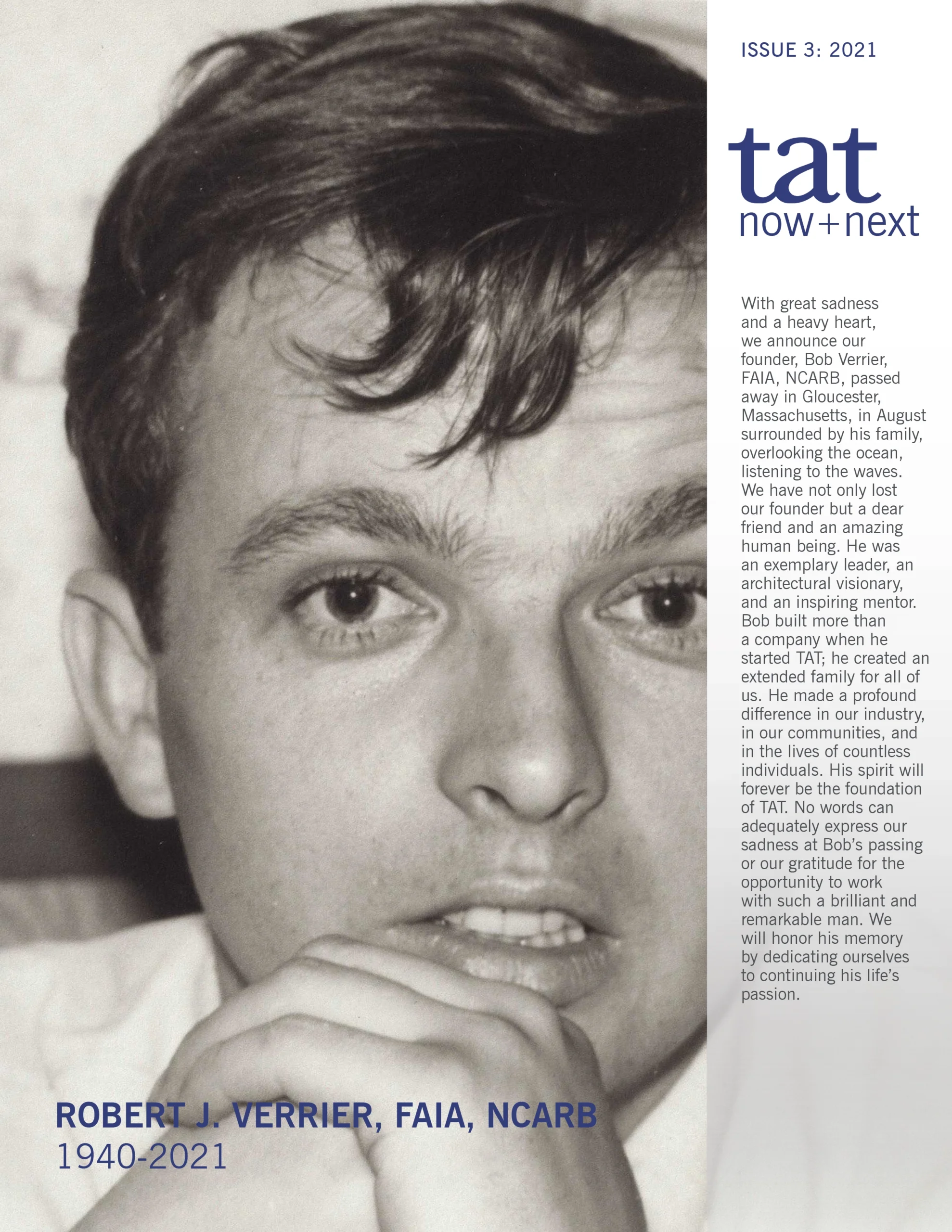
Issue 3: 2021
The Legacy of Robert J. Verrier, FAIA, NCARB
Over the course of a career spanning more than 50 years, Robert J. Verrier, FAIA, NCARB emerged as one of the country’s most widely cited experts and spokespeople on historic preservation and adaptive reuse. A gifted storyteller and an articulate, passionate believer in the potential of architecture to build community spirit, his perspective has been sought out by journalists nationwide, helping to bring the concept of adaptive reuse to mainstream prominence. Verrier walked with television news anchors through Boston’s Charlestown Navy Yard, contributed op-eds to The Atlantic, and provided authoritative insight and commentary for countless readers of the architecture, real estate development, and business media. In every possible instance, he described the tangible and intangible benefits of reimagining our country’s architectural heritage for urgent new uses — and a growing portfolio of award-winning residential conversions and other popular works led to new project announcements generating intense interest in local, regional, and national press. Just as important, Verrier’s dedication to the social value of architecture influenced the generations of professionals he mentored at The Architectural Team during his lifetime.

Leader
The Multiplier Effect. Creative, generous, and eager to bring new life to abandoned historic buildings — these are attributes that distinguished Bob. People admired Bob because his ego was not what you met first. You met his ideas. You also met his ebullience, optimism, and passion particularly for reusing buildings that others would have had deemed obsolete. He fostered and nurtured a firm of highly skilled professionals who pride themselves on pragmatic and innovative solutions to complex historic restoration projects. In rehabilitating and repurposing these buildings, Bob inevitably provided the most artfully efficient reuse of historic buildings, without fail.
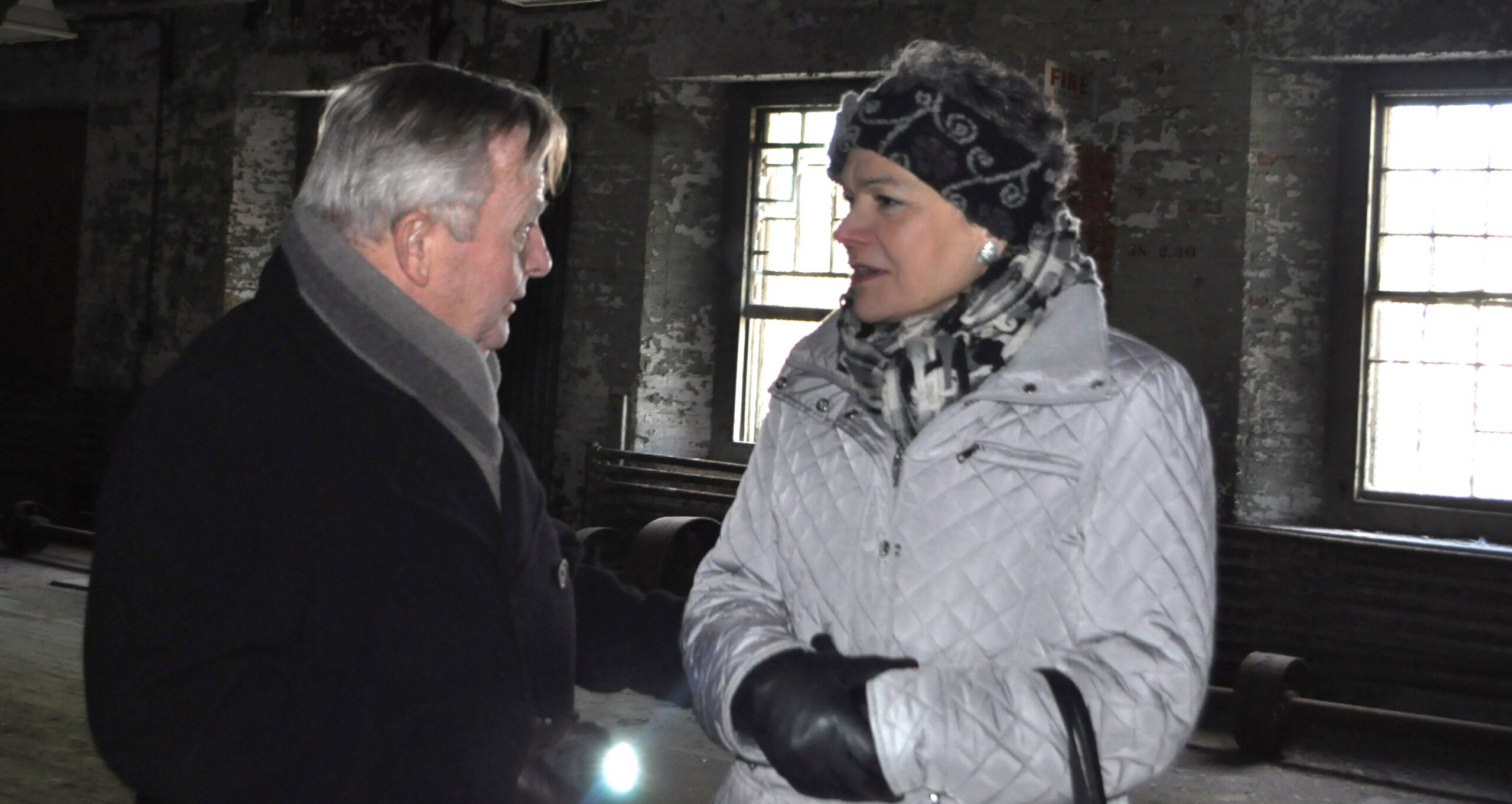
Through the historic reuse of architectural assets as multifamily housing, commercial and community centers, Bob’s work directly influenced stabilizing marginalized communities and improved the quality of life for many families and the communities they served. He had the confidence, skill, and foresight to find value in New England’s abandoned industrial and shuttered public buildings that lined the rivers, harbors, canals, decaying city streets and small-town centers. While developing these physical resources, his work spurred the economic vitality to these second-tier cities and towns by creating new housing resources, revitalizing local building trades, and spawning the growth of local economies. The multiplier effect of his work is no less an important component of his success.
Anybody that knew Bob understood that if they needed his help in any away, he would be right there, ready to support you. His work as the founder and managing principal of one of Boston’s most vibrant firms, fostered the successful careers of many architects. His legacy must include appreciation of his nurture of practitioners who have become the next generation of weavers and restorers of communities by rebuilding, restoring, and valuing historic precedent. Bob was passionate about looking to the past for inspiration and relishing a new future full of possibility. He was an original talent that enriched the profession and countless people’s lives.

Diane Georgopulos
Former Manager, Design and Construction Department, MassHousing
Personal Recognition
-
-
2024
Bob is posthumously recognized with Preservation Massachusetts’ highest honor, the Paul & Niki Tsongas Award, given to people that have displayed the highest level of commitment to historic preservation. Bob’s steadfast dedication and passion for the adaptive reuse, restoration, and rehabilitation of the nation’s architectural fabric have inspired generations of emerging architects within the firm and beyond
-
2021
TAT commemorates its 50th anniversary and Bob celebrates his 81st birthday
-
2016
Bob receives his tenth J. Timothy Anderson Award for Excellence in Historic Preservation from the National Housing & Rehabilitation Association
-
2013
Boston’s Planning Office for Urban Affairs, a social justice organization, honors Bob for his considerable affordable housing achievements
-
2012
Bob is elevated to Fellowship in the American Institute of Architecture (FAIA) for his range of work and unparalleled depth of experience in historic preservation and adaptive reuse
-
2011
Bob receives an Industry Excellence Award from the Rental Housing Association
-
-
-
2010
Habitat for Humanity honors Bob with the American Dream Award, recognizing his contribution to the improvement of the Greater Boston community
-
2008
Boston Architectural College honors Bob with a Distinguished Alumni in Practice Award, awarded for his significant impact in the design community while promoting and improving the design profession through his leadership
-
1988
Bob receives a National Historic Preservation Award personally awarded by President Ronald Reagan for the preservation and adaptive reuse of the Baker Chocolate Factory Complex
-
1984
Bob moves the firm to the restored 1840s-era Commandants House on Admiral’s Hill in Chelsea, changing its name to The Architectural Team (TAT) to reflect its broad geographic reach
-
1971
The Boston Architectural Team (BAT) is founded by Bob and three other architects
-
1967
Bob graduates from Boston Architectural Center, now Boston Architectural College
-
